

NAPA, CA | “Sheep grazing, which is such a beautiful sight to see, is a little bit of a newer practice for most growers here in Napa,” expressed Caleb Mosley, the Executive Director of Napa Valley Grapegrowers. From removing unwanted weeds to enhancing the flavor of wine, sheep grazing yields unbaa-lievable benefits for wine country.
“They bring a different energy to the whole process, which I think is really captivating,” said Mosley of the sheep. “It’s actually cool because it kind of creates a bridge back to some of these more holistic farming systems.”
“We have to be thinking in a really integrated way,” shared Anna Brittain the Executive Director of Napa Green. “Thinking in terms of how we cultivate soil health, and biodiversity and how all of that makes for a healthier vineyard and ultimately a better wine.”
Sheep graze on unwanted weeds and then fertilize soil while improving the water cycle. Grazing also reduces pollution and equipment emissions on grapes, providing tastier wine and a better output.
“There’s something almost magical about putting an animal out into a fresh field that nothing has been there for a while and there’s the anticipation in the animal waiting to move into the next block and the excitement that they get,” described Chris Maschauer the Owner of Napa Vineyard Sheep Grazing.
“I’m like the ice cream man when I show up they know they’re going to the next spot and they get all excited about that and so it’s kind of rewarding.”
For more information, visit: napavineyardsheepgrazing.com
Ads sent to or built by The Progressive Rancher become property of this magazine. Published 8 times a year. View all issues at www.progressiverancher.com Readership reaches more than 20,000. The views and opinions expressed by writers of articles appearing in this publication are not necessarily those of the editor. Letters of opinion are welcome; submit via email. Advertising rates available upon request. Advertising does not imply editorial endorsement. Liability for errors or omissions in advertisements shall not exceed the cost of the space occupied by the error or omission. Leana Litten Carey, Owner/Editor 2040 Reno Hwy 432 • Fallon, Nevada 89406 (208) 358-2487 • progressiverancher@gmail.com Cover photo by Leana Litten Carey “Old Equipment Reminds Us”
© The Progressive Rancher Magazine. All rights reserved. Owner/Editor/Publisher – Leana Litten Carey progressiverancher@gmail.com Graphic Design/Layout | athena@athenart.com 2 Napa Vineyard Sheep Grazing 3 NCA | President’s Perspective 4 NCA | April Roundup 4 BLM | Greater Sage-grouse: Habitat Conservation 6 NBC | Beef Checkoff News 7 NBC | Beef Recipes 8 Eye On The Outside (OpEd) Glass Half Empty...? 9 Van Norman & Friends SaleSave The Date! 11 Let’s Talk Ag (OpEd) Number of Beginning Farmers and Ranchers in Nevada is above the National Average and Soil Health is a Priority 12 NFB | Sage Grouse – The Next Round Of BLM Planning 14 NFB | Grassroots Newsletter 17 California Cattle Council Update 18 NDA | News from the Director 21 NDA | Nevada Food & Agriculture Q4 Trade Report 22 PLC | The News Roundup 24 NvACD and NRCS Announce Capacity Building Agreement 25 BLM | Stronger Conservation Plans 25 Churchill Co FFA Chptr News 26 SRM | Cheatgrass Control with Herbicides for Seeding Success 29 Cattlewomen’s Corner: Beef & Wine Pairings Planned 31 Nevada Today | Strategic Grazing Could Boost Conservation 32 USDA | Snow/Water Outlook 34 Biden’s Federal Land Leases 34 Farm Credit Supports Ag Orgs Read the magazine and more articles online at WWW.PROGRESSIVERANCHER.COM View all issues & additional articles at www.progressiverancher.com Follow us on Facebook! Now accepting Articles & Op Ed Submissions! (208) 358-2487 progressiverancher@gmail.com “Your Ranch Insurance Specialists” CALL FOR A QUOTE 1.800.523.6675 craig@stockmens.us mark@stockmens.us tom@stockmens.us 1664 Hwy 395 N #107 • Minden, NV 89423 Napa Vineyard Sheep Grazing promotes sustainable agricultural practices and better wine By Janel Andronico | ABC7 Eyewitness News https://abc7.com/videoClip/napa-vineyard-sheep-grazing-valleycalifornia-sustainable-farming-practices/14559689/
IN THIS ISSUE
The Progressive Rancher www.progressiverancher.com 2 APRIL 2024

Pedro Altube - “God took away for us, but God will give it back to us. We will do better the second time and in a few years, we will be worth a million pesos.”

As I sit down to write my monthly article it seems that winter is losing its grip. Days are getting longer and warmer. Spring is on the horizon. Traveling around the state and talking to other ranchers I think that this has been so far a perfect “tailor made” winter for Nevada. Plenty of snow up high, plenty of mud down low, not too warm, not too cold and the cattle market is strong. There are a lot of ranchers, me included, that will never forget the winter we put in last year.
It amazes me how Nevada and the Great Basin can be so harsh but then be so perfect within the span of two years. This brings me to Pedro Altube!
If you don’t know who Pedro is, shame on you. He was full Basque, born in Spain in 1831, then migrated to the United States as a young man. Look up his history, it’s worth the read. He is one of my personal heroes. His positive attitude, sense of resiliency, and thirst for adventure truly defines and embodies our culture and spirit in the Great Basin.
Pedro made the quote above after the devastating winter of 1889 -1890 (much like last year’s winter in my mind). After that winter he was all but wiped out, but he borrowed money, bought cattle in Idaho to stock the ranch and kept building his operation into what is known as the massive Spanish Ranch today. The pure grit and heart that it took to build what Pedro achieved is still alive 140 years later in our industry. As we build back after three years of terrible drought, bad cattle markets, and one incredibly harsh winter the future looks bright

to me! At times in life I think it is necessary to have our faith, grit, and resolve tested to build our character, but as Pedro said, “God will give back.” So enjoy the now because I feel that this is one of those times of “God giving back to us”.
This brings me to my second favorite Pedro quote: “Hey my friend, have a drink with me”. I think that’s enough typing for me, I’m off to mix up a Picon! Salut’e - to my resilient friends!
Hanes Holman
Hanes Holman | President, NCA



800 - 513 - 4963 • ww w.pinenutlivestocksupply.com Complete selection of animal health products, feed, and equipment for beef, dairy, equine, sheep, goat and small animal. Snyders Pinenut Livestock Supply Fallon: 8 - 5:30 M-F Gardner ville: 8 - 5 M-F
The Progressive Rancher www.progressiverancher.com APRIL 2024 3
by Martin Paris | NCA Executive Director | O: 775-738-9214
Happy Spring everyone! I hope everyone is getting through calving season without too much difficulty. I know I’ve been thankful for the winter we’ve had compared to last year. There seems to be plenty of moisture throughout the state without the bone chilling temperatures and 15-foot snowbanks in the valley bottoms.
It’s been a busy spring at the Nevada Cattlemen’s Association. I’ll start with some Congressional Appropriations that are important to the livestock industry. Recently, Congress was able to defeat the grasp of these short-term funding measures and pass a full fiscal year 2024 budget for several departments and agencies. Of note, the everimportant rider prohibiting an Endangered Species Act listing for any Greater Sage Grouse population was included in the funding package. There was an attempt to also include a rider to prohibit the Bureau of Land Management from implementing their proposed Conservation & Landscape Health Rule, also known as the conservation leasing rule, however this rider was not ultimately included.
The funding package also included $15 million for the Animal and Plant Health Inspection Service at USDA to purchase electronic ear tags and related
infrastructure needed for stakeholders to comply with the proposed animal disease traceability rule, should it be published. USDA estimates that it will take $26.1 million to transition from the currently required and approved metal tags to electronic tags. It’s important to note that under USDA’s 2013 traceability rule, sexually intact cattle 18 months or older that are moving interstate are required to have a readable ID tag. The proposed animal disease traceability rule would transition producers to electronic tags in an effort to better address disease outbreaks, particularly a potential foot and mouth disease outbreak in the U.S. NCA will continue to engage with our Congressional delegation on securing the necessary funding to prevent producers from being saddled with the increased costs associated with the proposed rule should it go into effect.
On a similar note, as part of ongoing trade talks within the Biden Administration, USDA recently put its stamp of approval on the importation of beef from Paraguay. Paraguay has a long and storied history with foot and mouth disease and the importation of beef from there would be very dangerous to the health of our domestic herd and consumers’ trust in our product. Recently, members of the Congress have

introduced a Congressional Review Act resolution (a resolution of disapproval). If the resolution is passed by the House and Senate and signed by the President, or if Congress successfully overrides a presidential veto, the Paraguay beef importation rule cannot go into effect. I’d like to thank Senator Rosen and Senator Cortez-Masto for being two of the ten Senators who are sponsoring the effort to protect U.S. livestock.
Finally, NCA will be sending a contingent to Washington D.C. for the NCBA/PLC Annual Legislative Conference in mid-April. We intend to discuss animal disease traceability, wild horses, federal land designations and much more during the trip. This trip serves as a great opportunity for NCA to meet face to face with our Congressional representatives to discuss priority issues and for them to see and hear from real producers who are impacted every day by the decisions they make. The responsibility of carrying your message from the countryside to D.C. is not something that is taken lightly and NCA greatly appreciates the opportunity to represent you on the issues that matter.
Till next time.
BLM | Greater Sage-grouse | Moving forward to conserve habitat
The BLM manages the largest single share of greater sage-grouse habitat in the United States – nearly 67 million of 145 million acres total. These same lands sustain Western rural economies built on outdoor recreation, ranching, farming, energy development and small businesses, and are critical for more than 350 other wildlife species – including pronghorn, mule deer and the pygmy rabbit. They are also the headwaters for the West’s major river systems.
For decades, federal, state and private land managers have worked to conserve and restore the sagebrush ecosystem, with federal agencies managing habitat on the lands they administer and states managing and monitoring wildlife populations.
The greater sage-grouse is in sharp decline. Populations once in the millions now number fewer than 800,000, largely due to habitat loss exacerbated by climate change effects (ie, drought, increasing wildfires and the spread of invasive species).
We have announced a proposal to strengthen greater sage-grouse protections on public lands, informed by the best-available science and input from local, state and federal partners. Alternatives for updating our sage-grouse habitat management plans build on the most successful components if the plans that were adopted in 2015 and revised in 2019.
The draft environmental impact statement which analyzes the potential effects of six proposed alternatives opened for public comment on March 15, 2024. The comment period will end on June 13, 2024. There will be two virtual and 11 inperson public meetings during the comment period to answer questions and provide further information.
READ & COMMENT ON THE DRAFT EIS:
https://eplanning.blm.gov/eplanning-ui/project/2016719/570
MEETING SCHEDULES:
www.blm.gov/programs/fish-and-wildlife/sagegrouse/blm-sagegrouseplans/2024-deis-public-meetings
ADDITIONAL READING
www.blm.gov/programs/fish-and-wildlife/sagegrouse/blm-sagegrouse-plans
www.blm.gov/press-release/blm-proposes-stronger-greater-sage-grouseconservation-plans
The Progressive Rancher www.progressiverancher.com 4 APRIL 2024




FREE SWEET CORN SEED WITH ORDERS! Tired Of Short-Lived Festololiums Johnstone - Always The Tallest Fescue On The Market A “Test Tube” Cross Between Ryegrass And Fescue, Johnstone Is High In Sugar Does Extremely Well On High PH Soils

HERE”S WHAT GROWERS ARE SAYING: (More testimonials available on our website)
We found only one baler in the Pahranagat Valley that could bale the heavy Johnstone crop.
Vaughn Higbee - Alamo, NV
We had to take half a swather to get through the Johnstone. Jim Champie - Austin, NV


GREENWAY
ID and Deerfield, WI
JOHNSTONE FESCUE IS BACK! Alan Greenway Seedsman Over 50 Years Experience Greenway Seeds Caldwell, ID Alan Greenway 208-250-0159 (cell) 208-454-8342 (message)
SEEDS www.greenwayseed.com “Modern Forages Sold Nationwide And Canada” Warehouses in Caldwell,
The Progressive Rancher www.progressiverancher.com APRIL 2024 5
Photo: Johnstone Crop in Alamo, NV
Beef Quality Audit Continues to Pay Dividends for the Entire Industry
Courtesy of Cattlemen’s Beef Board & Dan Kniffen
 Dan Kniffen
Dan Kniffen
I was born into the livestock industry, and I’ve enjoyed working with the great people in this industry my whole life. Over the years, I’ve been able to develop and raise a personal herd of purebred cattle. I’ve also spent more than 40 years working with students, currently at Penn State University as the cow-calf beef extension specialist and as an Animal Science professor. I enjoy helping students better understand the many facets of beef production. Take it from me—it’s true when they say if you love what you’re doing, no day ever seems like work.
I’m also just one of many people who’ve chosen to volunteer and give back to this industry that’s provided the lifestyle we love. I’ve had the pleasure of serving several terms on the Cattlemen’s Beef Board (CBB), and I’m also a member of the Beef Quality Assurance program’s advisory group. Through the CBB, I’ve developed some great friendships and dedicated considerable time and effort to ensuring the prudent investment of Beef Checkoff dollars. One of those investments is the National Beef Quality Audit (NBQA) that has taken place every five years since 1991.
NBQA helps us better understand what “quality” means to different beef industry sectors and the value of those quality attributes. The audit helps the beef industry discover what we should change to increase the value of our products. The Beef Quality Assurance Advisory Group develops the questions asked in each NBQA and ensures consistency with previous audits to permit a year-over-year data comparison. Then, we meet to review and discuss the audit results in great detail with our group and the research team that conducts the audit to develop consistent messaging.
My first thought after seeing the results of the first NBQA back in ‘91 was, “We have a lot of work to do.” And we did. But through a vigorous, industry-wide effort, we’ve tackled the challenges uncovered by that audit and the ones that followed. For example, the first NBQA raised the issue of injection-site lesions that consumers found concerning and distasteful. Just a few short years later, injection site lesions were almost nonexistent.
Over the years, as the NBQA advanced through its five-year cycle, the industry continued to measure and manage challenges with the same quick attention and turnaround. To get a better handle on consumer perceptions, the audit now includes a section with input from an in-person consumer survey. Implementing this survey gives us the opportunity to discuss the resulting data at producer meetings around the country.
The most recent NBQA took place in 2022. After looking at that audit’s results, I was pleased to see the industry’s continued progress toward the goals specified in our Long Range Plan. We’ve significantly improved efficiency across the entire supply chain, and that’s helped control our production costs, which benefits all consumers.
Additionally, it’s intriguing to see from this audit that consumers are far less concerned about food safety. They now simply expect our product to be safe without question – because we’ve taken the steps to ensure it is. We also found that more producers are adopting electronic ID for interstate movement of cattle, which should improve beef access to additional international markets. We’re also seeing more prime and choice carcasses available due to slower packing plant operations during the pandemic. As a result, more cattle remained in feedlots longer, gaining more weight and getting into better condition than they might have during a typical production year. Given today’s low cattle inventories, this situation is likely to change as cattle in the feedlot sector cycle out.
The NBQA remains one of the best ways for our industry to get a handle on current beef industry data and trends. Without the audit, we would lose the opportunity to manage beef quality because we’re not measuring its performance. As we’ve identified areas requiring improvement, beef industry stakeholders have come together and developed effective plans to address those issues. Without the continued checks and balances that the audit provides, beef would likely lose market share, something no beef producer wants. Our livelihoods depend on the NBQA.
With the perspective of time, it’s plain to see that investing Checkoff dollars in the NBQA has returned significant dividends to producers and the entire beef industry. You may know the adage, “If you don’t measure it, you can’t manage it.” That’s exactly what the first NBQA did back in 1991 and continues to do today.
Dan Kniffen is a Former Member of the Cattlemen’s Beef Board and Advisory Group Member, Beef Quality Assurance Program.
The Progressive Rancher www.progressiverancher.com 6 APRIL 2024
Beef on a Budget

CUBAN CRISPY SHREDDED BEEF
A few simple ingredients can take leftover Pot Roast to the next level. Traditionally known as Vaca Frita, sautéed beef with bell pepper, onion and lime juice, commonly served with rice and black beans. Delicious!
Ingredients
12 ounces shredded cooked beef Chuck Pot Roast
1 cup sliced green bell pepper
1 cup sliced onion
1/4 cup fresh lime juice
2 tablespoons olive oil
2 teaspoons minced garlic
1/2 teaspoon salt, divided 1/4 teaspoon ground black pepper
Hot cooked rice, black beans and lime wedges (optional
Directions
Combine the beef Chuck Pot Roast, bell pepper, onion, lime juice, oil, garlic, 1/4 teaspoon salt and black pepper in large bowl. Marinate in refrigerator for 15 minutes or up to 1-1/2 hours.
Heat a large, nonstick skillet over medium-high heat until hot. Spread 1/3 of beef mixture in thin layer in skillet. Cook until crispy in spots, turning several times, 2 to 3 minutes. Remove from skillet. Repeat twice with remaining beef mixture.
Season beef with remaining 1/4 teaspoon of salt. Serve with rice, black beans and lime wedges as desired.
ALTERNATIVE AIR FRYER COOKING METHOD
Recipe can be made in a 8-quart Air Fryer. Heat Air Fryer to 375°F. Spread 1/3 of beef mixture in thin layer in basket. Cook until crispy in spots, turning several times, 6 to 8 minutes. Remove from basket. Repeat twice with remaining beef mixture. Season beef with remaining 1/4 teaspoon of salt.
www.beefitswhatsfordinner.com
Easily enjoy unique and delicious beef dishes without breaking the bank!
Courtesy of Beef.ItsWhatsForDinner.com
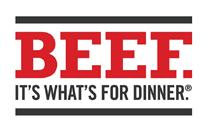

BOLOGNESE on PAPPARDELLE
This classic Italian beef and tomato sauce may have a few more ingredients than you’re used to, but we promise, it’s actually easy and the results will absolutely be worth it!
Ingredients
1 pound 93% lean Ground Beef
1 teaspoon olive oil
1 cup minced onion
1/2 cup diced carrot - 1/4”
1/2 cup diced celery - 1/4”
1 cup dry red wine
10 fresh thyme sprigs
3 fresh rosemary sprigs
2 cans (15 oz) tomato sauce (no salt added)
1 can (14-1/2 oz) diced tomatoes (no salt added)
1/4 cup Parmegiano-Reggiano cheese, divided
1/2 cup fresh basil leaves, roughly chopped
1/4 cup fresh parsley leaves
2 tablespoons fresh oregano leaves
1 tablespoon sugar
1 tablespoon fennel seed
1 tablespoon minced garlic
1/4 teaspoon crushed red pepper
1 package pappardelle noodles (fresh or dried)
Directions
Heat oil in stockpot over medium heat until hot. Add onions, carrot and celery; cook 5 minutes, stirring occasionally. Add red wine; cook and stir 1 to 2 minutes until browned bits attached to stockpot are dissolved. Simmer 5 minutes until wine is reduced by half. Cut 12-inch length of kitchen string and tie together rosemary and thyme sprigs to prepare herb sachet.
Add ground beef, tomato sauce, diced tomatoes, 2 tablespoons parmesan cheese, basil, parsley, oregano, sugar, fennel seeds, garlic and red pepper to stockpot; mix well. Add herb sachet, making sure it’s covered in sauce; tie end of string to handle of stockpot. Bring mixture to a boil. Reduce heat, cover and simmer 2-1/2 hours, stirring occasionally. Uncover sauce and cook for another 30 minutes, stirring occasionally. cut dough.
Cook pappardelle noodles according to package instructions; drain. Remove and discard herb sachet from meat sauce. Top noodles with meat sauce. Garnish with remaining cheese, as desired.
Recipes & photos courtesy of The Progressive Rancher www.progressiverancher.com APRIL 2024 7
Glass Half Empty...?
I try not to be negative and consider myself a glass half full sort of person. It has been easy to be in that frame of mind lately with the calf market providing relief to the cow-calf sector of the industry and by all accounts giving the other sectors a good paycheck too. The driver is consumer demand and the high quality of the product on the plate.
There was a time around thirty years ago, as most of you remember, when the quality of the product on the plate was not consistent and demand was descending into a critical area that would harm the industry. The ever resilient and intelligent American rancher and many supporters such as meat scientists, geneticists, seed stock producers and many of the beef checkoff contractors, among others, went to work and we are now at a place as an industry where demand for beef seems to be strong and sustainable.
However, like others, I follow other cattle industry thinkers and columnists and there are possible storm clouds on the horizon they have identified which could pose problems for all of us as time moves on. One of the trends being commented on a great deal lately is the size of the nation’s cowherd.
As this is written, there are 2% fewer cattle this year than there were last year with a population of approximately 87.2 million head. I have read that in 1975 the U.S. beef cowherd had a record population of approximately 46 million. Now, that population is approximately 28.2 million head. And I am sure most readers have heard we raise about the same amount of beef from those fewer cows than we did back then. Applied genetics and other improvements in production practices are some of the contributors to this trend toward optimization.
Under normal economic conditions and principles, we have all learned either academically or by experience, simple supply and demand is easy to understand. When the supply is low and demand is high, the price for the demanded commodity goes up. If supply is great and demand is low, prices trend downward. Using these basic principles to analyze current market conditions reveals some interesting developments.
As stated above, the demand for the quality product on the plate is high and is a driver for the current high prices along with the decreased cattle processing and
cow inventories. However, with a declining cowherd and continued demand driving prices up, at what higher price point does a consumer start to move away from beef to other proteins? This then is my glass half empty question.
We have been told by people a lot smarter than me we can expect the cow- calf producer to enjoy a similar market to that of this past year. Furthermore, there are predictions this strong market will last through 2026. This will obviously incentivize the sale of more heifers so the supply of calves will naturally decline.
Back to basic supply and demand principles, the meat supply will also decline, and the prices will increase. Again, where is the consumer bail out price point? Or will the high quality of our product that is now enjoyed by the consumer maintain demand?
On these tough questions I am an inquirer not an answerer. But we should all be thinking about these things.
I’ll see you soon.


MISSION STATEMENT | The mission of the Central Nevada Regional Water Authority is to prepare communities in central and eastern Nevada for sound water-resource decisions that promote prosperous economies and strong civic institutions in a healthy natural environment. For more information, please contact:
Jeff Fontaine, CNRWA Executive Director 775-443-7667 / ccjfontaine@gmail.com / cnrwa.com
PROTECTING YOUR WATER RIGHTS
The Central Nevada Regional Water Authority was established in 2005 to proactively address water issues in the Central Region, the largest of Nevada's 14 hydrographic regions. CNRWA formulates and presents a united position on water-related issues; monitors, assesses and responds to water projects that may adversely impact a member county; implements a groundwater monitoring program and encourages citizen participation in water-related issues. CNRWA’s nine member counties are: Churchill, Elko, Esmeralda, Eureka, Humboldt, Lander, Nye, Pershing, and White Pine.
The Progressive Rancher www.progressiverancher.com 8 APRIL 2024
VAN NORMAN & FRIENDS PRODUCTION SALE
The 28th Annual Van Norman & Friends Production Sale is scheduled for September 13-14, 2024. The sale offers riding horses and young prospects from some of the Great Basin’s best ranch breeding programs. Consignors are invited, which helps to ensure one of the highest quality offerings of true ranch horses in the West.
Many classic and contemporary cowhorse, cutting, and arena bloodlines are represented, allowing buyers the opportunity to own and ride some of the very best for ranch work, recreational riding, and performance.
Held at the Elko County Fairgrounds, the sale features a comprehensive preview and allows ample time for prospective buyers to walk through the barns to view potential purchases and visit with consignors. Acclaimed auctioneer, Steve Friskup of Muleshoe, Texas and his ringmen provide a fun and lively interactive experience for those who can attend in person, and online and phone bidding are also available through liveauctions.tv.
Follow Van Norman and Friends Production Sale on Facebook for catalog release dates, featured sale horses, and other updates. For more information, contact Linda Bunch at 775934-7404 or mrsbunch@rtci.net.
If you’re looking to sell a farm or ranch, give us call!
Beautiful, iconic ranch for sale! Formerly known as the Hanks Ranch, established in 1868 with 435 deeded acres and 122,080 acres of BLM ground with 4776 AUMS. The 435 deeded acres comes with 90% mineral rights! This cattle ranch runs 400 head of cattle year-round with an abundant supply of water! On the deeded ground there is a beautiful natural bottomless spring that produces 227.4 GPM. You will also find several natural springs throughout the entire ranch with 5 springs already developed on the East side from the mountain to the foothills, and on the West you will find springs that feed down the draws for ease of watering your cattle year-round. The water table is high so the valley floor has abundant lush meadow grass, which has previously been hayed or can be pastured. You will find a full set of working pipe corrals and a permanent loading chute located at the ranch headquarters. There are two houses on the property--the main house is 1352 sq ft 3 bed, 2 bath home and the bunk house is a 2 bed 2 bath home. This ranch has endless opportunities--This would be a perfect opportunity for anyone to run cattle year-round or to add to their existing operation. A true must see! Call Chad Steele on this one 775-962-1356
TUSCARORA FARM/RANCH
This 563.901-acre parcel has a 164 Acre center pivot for irrigation served by a 100 HP motor and turbine pump. Certificate for the well water is for 295 acres thus some of the fields flood irrigated on a normal year with surface water can also be irrigated with the well. The Pivot system is also fed by a 30 HP motor and centrifugal pump that feeds from several storage ponds fed by Taylor Creek. While creek water is available, this system is less expensive to operate. In addition to the 164 acres under pivot there are an additional 128 acres of surface water rights. The remaining 265.901 acres of native pasture. There is a 3400 sq ft shop with several roll up doors used primarily for storage. In addition, there are several storage sheds and a container. An older mobile home is on the property (not currently livable). Total taxes $1,616.98/yr. Great starter farm/ranch. Call Paul Bottari on this one 775-752-0952
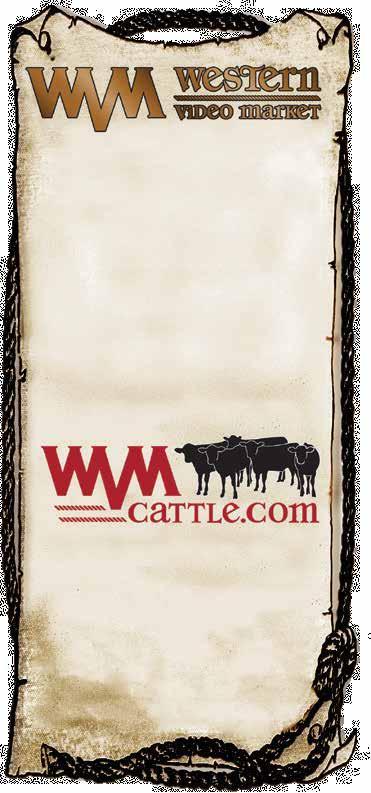
For more information, please call (530) 347-3793 or email us at wvm@wvmcattle.com Look for the catalog and video on ww w.w vmcat tle.com Market your cattle with the professionals! WATCH & LISTEN TO THE SALE on the Web at: U P C O MI N G S A L ES urs • May 23, 2024 WVM Headquarters • Cottonwood, CA Consignment Deadline: May 15, 2024 urs • May 2, 2024 Harris Ranch Resort • Coalinga, CA Consignment Deadline: April 17, 2024 Simulcast on DISH 998
For additional information on these
visit BOTTARIREALTY.COM Paul D. Bottari Broker, Accredited Land Consultant (ALC) NV Lic.# B 015476 Bottari & Associates Realty | 775.752.3040 Cell: 775.752.0952 | paul@bottarirealty.com 530 S Shoshone Ave • PO Box 368 Wells, NV 89835
NEVADA RANCH
properties,
CENTRAL
The Progressive Rancher www.progressiverancher.com APRIL 2024 9

WASHINGTON CREEK RANCH LANDER CO.
640 +/- acre Reese River Valley farm, 6 pivots, water rights for 500 acres, 3 mountain streams and 3 ag wells. Currently producing quality horse hay, with strong repeat customer base. Pride of ownership throughout $2,950,000 MLS #3623776

CHICKEN RANCH ELKO COUNTY
Off grid, 718 acres, 325 irrigated, 2 artesian wells flowing 300+ gpm each of 68° water. 10 wheel lines, can run 5 simultaneously on gravity flow, more w/ diesel booster pumps, corrals w/loading chute. $2,500,000 PRICE REDUCED $1,900,000 MLS #3623335

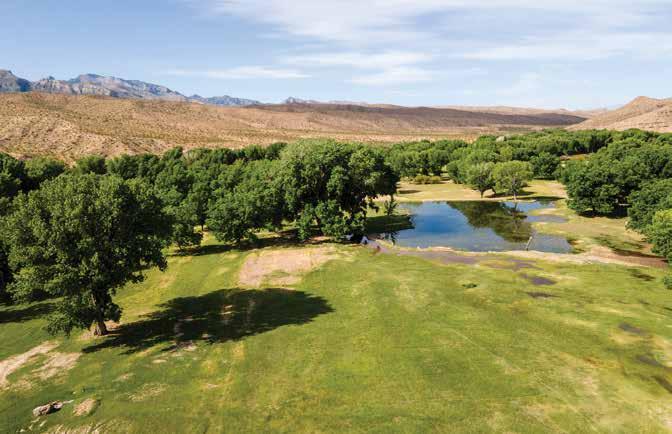
WEBER RANCH LINCOLN COUNTY
120 acre off grid oasis, 40 irrigated, year round live stream and pond, 100+ mature pecan trees, solar panels with back up diesel generators, two 30’ x 100’ greenhouses. $1,750,000 MLS #3623477
For more information on these and other listings, visit www.outdoorpropertiesofnevada.com

When you’re ready to sell, leverage our unsurpassed expertise and marketing power and let us showcase your ranch to the largest possible buyer pool.

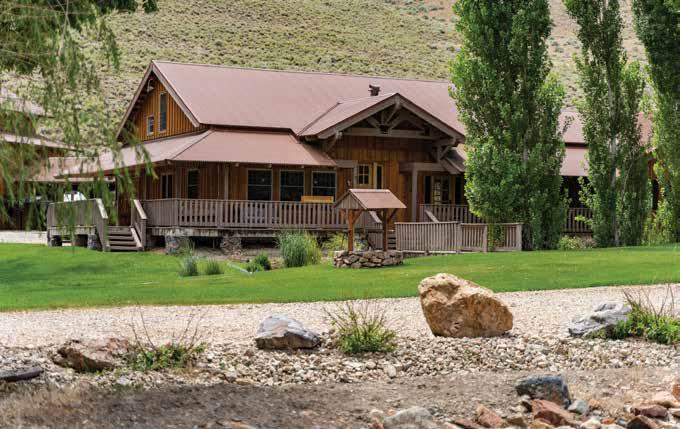
DIXIE RANCH PERSHING COUNTY
Unique 64 acre property at Unionville. 10 irrigated acres & pond fed by Buena Vista Creek. 3,000 sqft main home, 1,800 sqft 2nd residence, 1,200 sqft apartment. Great personal retreat or commercial venture. Nevada’s oldest school house is on the property. Wet bar & bandstand offers a great setting for social events. $3,480,000 PRICE REDUCED $2,480,000 MLS #3624119

Lifetime Pipe for Agriculture

• Durable, efficient alternative to PVC
• We are proud of our personalized service and fair prices
• We have installed miles of HDPE and can visit with you about your projects
• We offer a full line of fusible HDPE pipe 3/4" up to 6" on continuous reels+ 48" in sticks+ all the fittings

DeHverythroughoutthe Great Basin and the West 541-589-3304 • westernpolypipe.com
ElliE PErkins
Lic
S.198106 ellie@ranchnevada.com 775-761-0451 The Progressive Rancher www.progressiverancher.com 10 APRIL 2024
NV
#
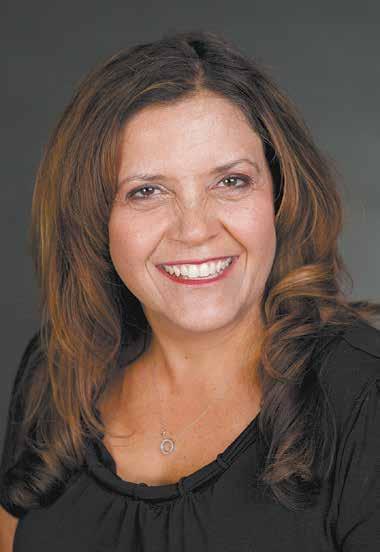
Let’s Talk Ag
By Staci Emm | Editorial
Number of Beginning Farmers and Ranchers in Nevada is Above the National Average and Soil Health is a Priority
Agriculture demographics and priorities in Nevada are changing and evolving to include an increasing number of beginning farmers and ranchers along with an expanding interest in soil health.
Last month, I wrote about our Extension risk management program and the upcoming conferences in March: An Urban Agriculture Conference in Las Vegas, a Small Agriculture Conference in Fallon, and a Bee-Garden Conference in Gardnerville, Nevada. I also wrote about 2022 Census of Agriculture data. We are currently debriefing from all our trainings, workshops and conferences in that included the Cattlemen’s Update and the three conferences we just finished in March.
We are seeing some changes in our demographics and in producer wants and needs. I will tell you that all of our “Climate-Smart” or also known as “Regenerative Ag” seats were sold out and attendance was, by far, greater than I have ever seen. Conference evaluations specifically stated that more soilhealth education was wanted. I was particularly surprised to walk into the Fallon pre-conference workshop to see how many farmers were attending and participants left saying it was one of the best workshops they had ever attended. It was just a week before that we were in Las Vegas, where there was not a seat in house during the educational programming. I told myself to pay attention!
During this time, I continued to analyze 2022 Agricultural Census data as I have some grant proposals to get ready. My retired colleague Tom Harris sent me an email saying, “Have you checked this out?” When I opened the file, I honestly did not see this coming. Nevada is above the national average of beginning farmer and rancher producers. He even created Table 1, which lists the producers and beginning farmer and rancher producers by county. I told myself to pay attention!
We will begin debriefing, as a team, our 2024 risk management programs that included Cattlemen’s Update, Urban Agriculture, Small Agriculture, and Apiculture. We will compile all evaluations, data, comments made to team members, and situations that occurred or did not occur. We will then begin planning for 2025. We, as a team, need to pay attention!
I now encourage “You” to “Pay Attention.” What is happening in Nevada is that we have movement like we have not seen before. We have producers that are managing for soil health. We have beginning farmers and ranchers that

Nevada Water Solutions LLC
Water Rights / Resource Permitting Expertise
Thomas K. Gallagher, PE
775 • 825 • 1653 / FAX 775 • 825 • 1683
333 Flint Street / Reno, NV 89501
tomg@nevadawatersolutions.com

can’t get enough knowledge and continue to grow in numbers. While this is exciting to see, it is also a little scary for a woman that grew up on a hay and cattle farm/ranch. This is different from what I have seen overall in my last 20 years in Extension. It was 20 years ago that I could not get five people to participate in a soil health workshop. Soil health is so important and it is exciting to see how many farmers and ranchers are embracing the discussion.
Let us all “Pay Attention.” There is some pretty cool management happening out there and some really great beginning farmers and ranchers doing incredible things. If we “Pay Attention,” we will recognize it!
The Progressive Rancher www.progressiverancher.com APRIL 2024 11
Sage Grouse – The Next Round Of BLM Planning
By Doug Busselman | NFB Executive Vice President
On March 15th the official notification was made for the next round of the Bureau of Land Management (BLM) planning for Greater Sage Grouse across the western United States.
While BLM has been involved in moving forward with their management activities for Sage Grouse and sagebrush habitat since they first began their 2015 Resource Management Plan Amendments (RMPA), this current round is being considered to amend the RMPs to address a sub-set of Greater Sage Grouse management and to improve the efficiency of and effectiveness across state boundaries.
This BLM webpage offers something of an opening portal to begin the process of tracking down more specifics on what is presently underway.
The 90-day comment period for the Draft RMPA and the Draft Environmental Impact Statement (EIS) associated with this revamp/update will end on June 13, 2024. Persons wishing to learn more of the details and possibly participate in the public comment period can review the Draft RMPA/EIS that is available for review on the BLM ePlanning project website at:
https://eplanning.blm.gov/eplanning-ui/ project/2016719/570
Written comments related to the Greater SageGrouse Rangewide RMPA may be submitted by any of the following methods:
• Website: electronically via the BLM ePlanning website at https://eplanning.blm.gov/eplanning-ui/ project/2016719/510.
• Email: BLM_HQ_GRSG_Planning@blm.gov
• Mail: BLM Utah State Office ATTN: HQ GRSG RMPA, 440 West 200, South #500, Salt Lake City, UT 84101
In addition, BLM is concurrently offering a 60day comment period for consideration of the designation of Areas of Critical Environmental Concern (ACEC) which would be incorporated into two of the six alternatives being considered and would prohibit all types of land use and activities.
Proposed Nevada-related ACEC resource management plans (RMP) include:
• Black Rock Desert-High Rock Canyon Emigrant Trails National Conservation Area RMP
• Carson City Field Office Consolidated RMP
• Elko RMP
• Ely RMP
• Shoshone-Eureka RMP
• Tonopah RMP
• Wells RMP
• Winnemucca District RMP
There are also three California-related areas for ACEC resource management plans that could be amended:
• Altura RMP
• Eagle Lake RMP
• Surprise RMP
The BLM will hold two virtual public meetings and 11 public meetings to answer questions and take further comments on the draft alternatives and analysis.
This website link: www.blm.gov/programs/fish-and-wildlife/ sagegrouse/blm-sagegrouse-plans/ 2024-deis-public-meetings
will share the details for these meetings, including the specifics for the two virtual meetings scheduled for 1 p.m. Mountain Daylight Savings Time (MDT) on Tuesday, April 9th and Thursday, April 25th at 6 p.m. (also MDT).
A Reno/Sparks, NV, in-person meeting will be held on Tuesday, April 16th from 6 to 8 p.m. at the Nugget Casino in the Cascade Room.
A brief overview of the six alternatives being considered:
Alternative 1: BLM would re-adopt the applicable Greater Sage Grouse habitat management area boundaries, goals, objectives, and actions that they offered in their 2015 Records of Decision. This proposal got shut down by a court injunction and brought about the adoption of the 2019 version. This option would allow the agency to return to their management of Sagebrush Focal Areas with the recommendation of using this designation to withdraw mineral location and entry under the Mining Law of 1872. It would also allow for prioritization of other activities to vegetative treatments like livestock grazing and wild horses & burros.
Alternative 2: This is suggested to be the agency’s “No-Action” Alternative, operating under the applicable decisions from the 2019 Record of Decision (except for areas in the Montana/Dakotas). It is being considered as the “No-Action” Alternative because it reflects management currently in BLM’s Resource Management Areas. This option also most closely follows the Sage Grouse plans that were developed by the states.
Alternative 3: In their own words, this alternative “includes the most restrictive measures to protect and preserve Greater Sage Grouse and its habitat.” Armed with the ACEC’s (covering over 11 million acres) that the agency would like to include, this proposal would make all habitat management to the level of priority habitat management and exclude all uses, including livestock grazing. It even suggests that BLM would pull all Wild Horses and Burros from the designated areas.
Alternative 4: This proposal updates the habitat management areas and associated management based on new information and science that has become available since the 2015 and 2019 versions of BLM’s top-down requirements. In Wyoming it dings new oil and gas leases and puts into place the potential of compensatory mitigation to be used in specific conditions. It would allow for more opportunities for consideration of local habitat characteristics when applying mitigation exceptions but still requires functional habitat prior to granting the exception.
Nevada Farm Bureau
The Progressive Rancher www.progressiverancher.com 12 APRIL 2024
Lastly, this alternative would treat the previously identified Sage Grouse Focal Areas to be managed as Priority Habitat Management Areas with removal of the withdrawal from mineral entry recommendations and prioritization strategies.
Alternative 5: This proposal has been identified as BLM’s “preferred alternative.” State Sage Grouse management areas have been updated in this version of possible management. It is also considered to be the option with fewer restrictions and more flexibility, using higher degrees of compensatory mitigation to offset impacts on Sage Grouse and their habitat. For wind, solar and major rights-ofways projects (top priority BLM objectives) have less direct avoidance and provide more opportunities for considering compensatory mitigation to offset the impacts on the birds as well as their habitat.
Alternative 6: This alternative is proposed to be like Alternative 5 with the exception that it includes the addition of ACECs to follow the restrictions found in Alternative 3. Supposedly the ACEC scheme in Alternative 6 is going to seek less restrictions in comparison with the plans for Alternative 3.
NEVADANS NEED TO BE ENGAGED!
Due to the potential impacts of BLM management activities considering their on-going conservation efforts for Greater Sage Grouse and sagebrush habitat it is very important for those who depend on rangelands, managed by BLM, to be involved in understanding what is being proposed as well as participating in the two periods for submitting public comments. There are efforts underway to expand the timeframes beyond the 90-day and 60day comment periods, seeking more time to better understand all the ramifications of what is being considered, but there are no predictions on whether such extra time will be granted.
Interested people are also encouraged to participate in the virtual information meetings or attend the in-person meeting that is being scheduled for the Reno/Sparks area at the Nugget Casino on April 16th, 2024.

The Progressive Rancher www.progressiverancher.com APRIL 2024 13
Make Your Plans To Join BLM Sage Grouse Public Meetings
Over the past several weeks we’ve shared the Bureau of Land Management’s (BLM) new federal plan: www.blm.gov/press-release/ blm-proposes-stronger-greatersage-grouse-conservation-plans
Since that original announcement, we’ve had the opportunity to begin the process of digging into what the agency has to say about their proposed plans. The 90-day comment period for the Draft Resource Management Plan Amendment and the Draft Environmental Impact Statement (EIS) will end on June 13, 2024. More information on how to comment on this draft connect with this link: https://www.blm.gov/programs/ fish-and-wildlife/sage-grouse
In addition, BLM is concurrently offering a 60-day comment period for consideration of the designation of Areas of Critical Environmental Concern (ACEC). The ACECs would be incorporated into two of the six alternatives being considered and basically would prohibit all types of use and activities.
The BLM will hold two virtual public meetings and 11 public meetings to answer questions and take further comments on the draft alternatives and analysis. The first meeting will be a virtual meeting on Tuesday, April 9th. It starts at 1 p.m. Mountain Daylight Savings Time (Noon our time here in Nevada). Pre-register here: https://empsi.zoom.us/webinar/ register/WN_vPkfsSS9RcuPRa6NOFD7A#/registration
On Tuesday, April 16, 2024 a public meeting will be held in person at the Sparks, NV Nugget and Casino. This meeting is scheduled to take place from 6-8 p.m. in the Cascade Room of the Sparks, Nugget and Casino.
As the series of meetings wind up around the western region, another virtual meeting will be held virtually, Thursday, April 25, starting at 6 p.m. Mountain Daylight Savings Time. Pre-register here https://empsi. zoom.us/webinar/register/WN_ vPkfsSS9RcuPR-a6NOFD7A#/ registration
As we have reported, the six alternatives include:
Alternative 1: BLM would re-adopt the applicable Greater Sage Grouse habitat management area boundaries, goals, objectives and actions that they offered in their 2015 Records of Decision. This proposal got shut down by a court injunction and brought about the adoption of the 2019 version. In particular this option would allow the agency to return to their management of Sagebrush Focal Areas with the recommendation of using this designation to withdraw mineral location and entry under the Mining Law of 1872. It would also allow for prioritization of other activities to vegetative treatments like livestock grazing and wild horses & burros.
Alternative 2: This is suggested to be the agency’s “No-Action” Alternative, operating under the applicable decisions from the 2019 Record of Decision (except for areas in the Montana/Dakotas). It is being considered as the “NoAction” Alternative because it reflects management currently in BLM’s Resource Management Areas. This option also most closely follows the Sage Grouse plans that were developed by the states.
Alternative 3: In their own words, this alternative “includes the most restrictive measures to protect and preserve Greater Sage Grouse and its habitat.” Armed with the ACEC’s (covering over 11 million acres) that the agency would like to include,
this proposal would make all habitat management to the level of priority habitat management and exclude all uses, including livestock grazing. It even suggests that BLM would pull all Wild Horses and Burros from the designated areas.
Alternative 4: This proposal updates the habitat management areas and associated management based on new information and science that has become available since the 2015 and 2019 versions of BLM’s top-down requirements. In Wyoming it dings new oil and gas leases and puts into place the potential of compensatory mitigation to be used in specific conditions. It would allow for more opportunities for consideration of local habitat characteristics when applying mitigation exceptions but still requires functional habitat prior to granting the exception. Lastly, this alternative would treat the previously identified Sage Grouse Focal Areas to be managed as Priority Habitat Management Areas with removal of the withdrawal from mineral entry recommendations and prioritization strategies.
Alternative 5: This proposal has been identified as BLM’s “preferred alternative.” State Sage Grouse management areas have been updated in this version of possible management. It is also considered to be the option with fewer restrictions and more flexibility, using higher degrees of compensatory mitigation to offset impacts on Sage Grouse and their habitat. For wind, solar and major rights-of-ways projects (top priority BLM objectives) have less direct avoidance and provides more opportunities for considering compensatory mitigation to offset the impacts on the birds and their habitat.
Alternative 6: This alternative is proposed to be similar to Alternative 5 with the exception that it includes
the addition of ACECs to follow the restrictions found in Alternative 3. Supposedly the ACEC scheme in Alternative 6 is going to seek less restrictions in comparison with the plans for Alternative 3.
Scholarship Opportunities
We have two exciting scholarship opportunities accepting applications. We have the Dave Fulstone Scholarship open to any student graduating from a Nevada high school this year, who is furthering their education in a course of study pertaining to agriculture. We also have the Trade School Scholarship that is open to any student graduating from a Nevada high school and going into a trade to support agriculture or students already pursuing a trade to support agriculture.
The deadline to apply for both applications is April 1st.
The Dave Fulstone Scholarship Application can be found at this link:
www.nvfb.org/articles/dave-fulstonescholarship/
The Trade School Scholarship Application can be found at this link:
www.nvfb.org/articles/trade-schoolscholarship/
Clark County Fair and Rodeo Member Discount
We are excited to announce we have a special discount for Nevada Farm Bureau members to the Clark County Fair and Rodeo. The Clark County Fair and Rodeo is April 10 through the 14.
Members receive:
20% off Daily Fair Admissions
20% off Wednesday, Thursday or Sunday Rodeo / Fair Tickets
Tickets must be purchased online or over the phone by April 5, 2024.
Phone: 1-888-876-FAIR
Online: www.etix.com/ticket/v/12845
Enter promo code WRCCF24 for discount. Ticket fees are only charged on online orders.
Nevada Farm Bureau Grassroots News
The Progressive Rancher www.progressiverancher.com 14 APRIL 2024
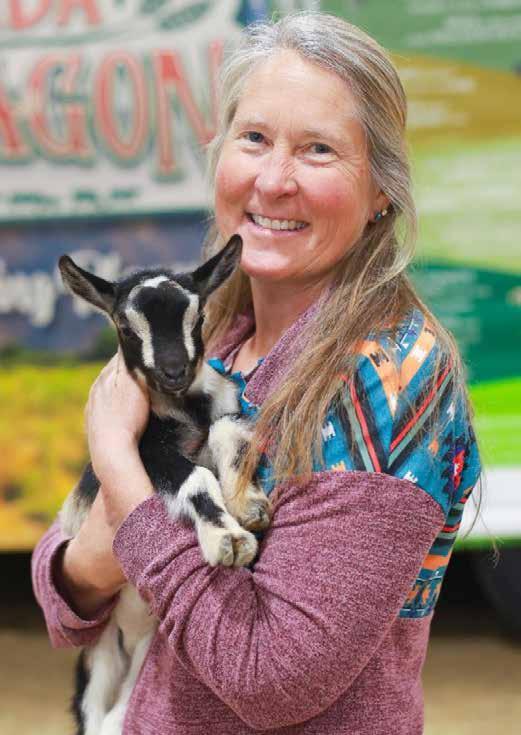
Farm Bureau Busy At Bee Conference
Last weekend Nevada Farm Bureau wrapped up its involvement with the University of Nevada Reno Extension series of conferences for March. Farm Bureau was involved with Extension in the Urban Agriculture Conference held in North Las Vegas, in the Small Farm Conference in Fallon and in the Bee and Garden Conference in Gardnerville. The exhibit presented at the Bee and Garden Conference included Agriculture In The Classroom materials that are used to promote educational sessions for students. The new feature of this material are a crop of bee squishes promoting the message to “Bee A Member.” We also have a new beehive box with new materials on the role bees play in our world.
Welcome Aboard Robin Futch
We’re pleased to welcome our newest team member to the Nevada Farm Bureau team. Robin Futch of Gardnerville has been selected to serve as the organization’s Director of Agriculture Education. She will be responsible for coordinating the Nevada Farm Bureau’s Agriculture In The Classroom program and will also be working with county Farm Bureaus along the northern section of the state.
Robin’s background in education, including serving as a vocational agriculture teacher and FFA advisor, provides an outstanding background for taking the Agriculture In The Classroom and Agricultural Literacy forward.
Nevada Meat Regulations Adopted By Board Of Agriculture
During their March 15th meeting, the Nevada Board of Agriculture conducted a hearing on the proposed regulations that were brought forward and after the hearing concluded they gave their approval for moving the proposal forward. With the next step of approval by Director JJ Goicoechea (who also serves as the state’s quarantine officer) the regulations now move to the Nevada Legislative Commission for the final stage prior to implementation. The adopted language is found, starting on page 7 of this document:
agri.nv.gov/uploadedFiles/agrinvgov/ Content/Animals/NAC%20583_ Hearing_Notice_DAG_Approved.pdf
First Ag In The Classroom Event For 2024 Kicks Off In Winnemucca
The first Agriculture In The Classroom session, involving third graders from Humboldt County, launched this year’s schedule of activities in Winnemucca. Students visited 15 different stations, including the Nevada Farm Bureau Ag Wagon. Congratulations to the leadership team, led by Sharon Barton, who organized and conducted this year’s Humboldt County Agriculture In The Classroom program. Thank you also for the number of volunteers who set up and operated their respective presentation areas, covering everything from beef to dairy, from horses to goats, from bees to seed and much more.
Nevada Division of Water Resources Holds Humboldt River Meeting
After the three sessions held last year, providing opportunities for various proposals of what might be approaches for addressing the conflicts of senior and junior water right owners along the reach of the Humboldt River, a meeting was held on March 19th. During the course of the meeting, Division of Water Resource staff recapped the major themes of the proposals presented last year. Although there was some expectations that something might come from the meeting – there was only an announcement of creating a working group of stakeholders that will have their first meeting sometime in July.
The working group would have representatives of a number of different categories. These categories would be balanced between areas of the northern reach of the Humboldt and down-stream area with the Palisade Gage as the divider between the two areas. The identified categories include:
2 county representatives
2 industrial representatives
2 underground irrigation representatives
2 at large representatives
2 legal representatives
2 hydrogeology representatives
2 municipal supply representatives
2 mining representatives
2 surface irrigation representatives
1 environmental representative
1 water rights technical representative
1 economics technical representative
Stakeholders can be nominated (with a limit that no more than one person can be nominated by each participating entity) – or the representatives can self-nominate themselves to be considered. The nominations need to be sent to Levi Kryder of the Nevada Division of Water Resources by 5 p.m. on April 16th.
The only other “newsworthy” update is the continued delay of the long-overdue mid-river area model of the capture of surface water being drawn off by junior water right groundwater pumping. This section of the river is supposed to be a work product of the U.S. Geological Survey and is several years beyond the original plan for the study and model development.

The Progressive Rancher www.progressiverancher.com APRIL 2024 15
C all o r s t op in for our comple t e list of Seeds in stock

R o n ’s S ee d & S up p l y
710 Grass Valley Rd • Winnemucca, N V 894 45 775- 623-5053 • ronsseed@gmail.com
Serving Nevada Agriculture for 40 years
H A R VX TR A ® & R OU ND U P R EA DY ® A L FA L FA
F D W H
6 4 09H V X R R 4 V H
6 4 9 7 R 4 V H
6 516R 5 H
R e v ol t 6 -
W L 3 3 6HQ R R 3 V H
W L 3 5 6HQ .R R 4 V H
W L 3 7 2 HQ R R 5 V H
G R AINS & MISC
- Cayuse
O a t s
W he a t
Tr it ic a le
- M onida
- Twin
- PR 1404
- Patrone
- Forerunner
- M erlin
B e a r dle s s B a r le y E ur ek a
P e a s
C or n
S or g hum S uda n
R y e g r a in
C ho w f or d
S t ock f or d
- BM R
- Piper Sudan
- Sweet RN
- Honey
- Gazelle (Spring)
- Prima (Fall)
- VN S
S a l t t o l e ra n t , d ro u g h t- h a rd y, o rg a n i c a l l y a p p rov e d a n d n o n - G M O se e d v a ri e t i e s a v a i l a b l e .
C ONV EN T I O N A L A L FA L FA VARIETIE S
6 4 2 2 Q C inch I (ML) Ver n a l
6 4 01N C inch II R a nger
65 8 5 Q R on ’ s Blend W L 3 4 3 HQ
6 3 0 5 Q S pr e dor 5 W L 3 5 4 HQ
C L O V E R S
A ls ike
L a dino
R e d C lo v er
S t r aw ber r y
W hit e Du t ch
Yello w Blo s s om
PA S TUR E MI X E S
Oly mpic E lit e
Uni v er si t y w/ No C lov er
Nor t hw e s t P a s t ur e
Hor s e P a s t ur e
R on ’ s Dr y la nd Mi x
R on ’ s R a ngela nd Mi x
TUR F GR A SS E S
R on ’ s S pe cia l Tur f Mi x
K Y Blue G r a s s
At hle t ic Tur f Mi x
T T P er ennia l R y e g r a s s
C he w ing s Fe s que
B en t g r a s s
D RY L A ND & R EC L AM AT I ON SEE D
W he a t g r a s s e s Immig r a n t Kochia
Nor d a n C r e s t e d S no w s t or m (Ne w)
Ne w H y/ S a lt la nder G r e a t B a s in W ild R y e
Bluebunch R o a dc a s t
H y cr e s t C r e s t e d Ta ll W he a t g r a s s
S iber ia n W he a t g r a s s Sh a de s c a le
O a he In t er me dia t e 4 W ing S a lt bus h
P ube s c en t
919 Br a nd L a d a k W L 3 6 3 HQ ©2021
G a rr is on C r e eping
India n R ice g r a s s Me a do w Fox t a il
Big S a gebr us h R a nge Ch a nger
FIEL D GR A SS E S
Or cha r d G r a s s e s
- Seco (Dryland)
- Potomac
- Paiute
Moun t a in Me a do w Br ome
S moo t h Br ome
A nnua l R y e G r a s s
P er ennia l R y e G r a s s
C lim a x T imo t h y
Faw n Ta ll Fe s cue
Genetics International,
Roundup Ready® is a registered trademark of Monsanto Technology LLC, used under license by Forage Genetics International, LLC. HarvXtra® Alfalfa with Roundup Ready® Technology and Roundup Ready® Alfalfa are subject to planting and use restrictions. Visit www ForageGenetics.com/legal for the full legal, stewardship and trademark statements for these products. HarvXtra and NEXGROW are
Genetics
Forage
LLC.
registered trademarks of Forage
International, LLC. Prices and programs are subject to change. Because of factors outside of Forage Genetics Internationa s control, results to be obtained, including but not limited to yields, financial performance, profits, losses or otherwise, cannot be predicted or guaranteed by Forage Genetics International.
The Progressive Rancher www.progressiverancher.com 16 APRIL 2024


A MESSAGE FROM THE EXECUTIVE DIRECTOR
“...the Cattle Council offers new strength to the industry by giving it the opportunity to go on the offensive.”
We are well into 2024, and it seems that California is having a busy year. Rain continues to fall as we enter another year that is on pace to surpass averages.
The Council is hard at work funding projects that will target current industry and producer priorities. We are coming off a strong year in 2023, where the Council spent a large percentage of our annual budget to launch an aggressive public affairs campaign on the environmental and economic benefits created by California’s cattle industry. (https://calcattlecouncil.org/calresilient-2023/) All three industry segments were equally highlighted - from ranchers to dairy farmers to cattle feeders. This campaign marked a new milestone for California’s cattle industry, particularly the beef industry, which saw TV, online, digital, and radio advertisements up and down the state stressing the importance of cattle grazing to reduce wildfire intensity, promote wildlife habitat, and much more. In addition, TV, radio, and digital advertisements also highlighted the significant investments the dairy industry has already made to reduce methane emissions. There are no shortage of issues to react to at any given time in California, however the Cattle Council offers new strength to the industry by giving it the opportunity to go on the offensive.
The Council is now entering its fifth year. I will have much to talk about what we will be doing in 2024 in the future, but I want to take a brief moment to reflect on the significant progress we have made since 2019. We emerged from the pandemic firing on all cylinders and tackled a myriad of issues with effective and meaningful campaigns. Don’t forget the Rancher’s Technical Assistance Program and the other successful projects the Council has funded through our industry partners to maximize your dollar investment and reduce overhead and administrative costs.
As for 2024, we began the year by conducting targeted public opinion focus groups in Sonoma and Marin Counties. The dairy and cattle industry is expected to be challenged in Sonoma County, specifically this year, regarding their ability to operate as normal. Although the Council cannot engage in supporting or opposing ballot initiatives or legislation, we can conduct research and broad public education campaigns.
Our work for 2024 is just kicking off, and there will be much more to discuss and provide updates on over the next few months. Please stay tuned and never hesitate to visit our website to see the specific products of our work firsthand. We appreciate your ongoing support of the Cattle Council and wish you a healthy and productive 2024.
Keep involved with what the Council is doing! Follow @CattleCouncil on Facebook, Instagram and Twitter to stay engaged and visit our website to learn about other investments the Council has made: calcattlecouncil.org
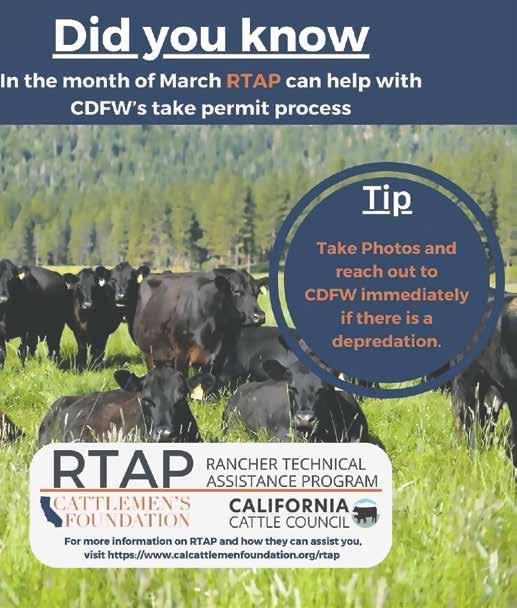
In the month of March, the Rancher Technical Assistance Program (RTAP) can assist you with the CDFW’s take permit process. For more information about RTAP, visit calcattlemenfoundation.org/rtap
RTAP is a free regulatory assistance program for all cattle ranchers. The program is provided by the California Cattlemen’s Foundation and funded by the California Cattle Council.
CURRENT INVESTMENTS
CATCH UP ON STORIES FROM CALIFORNIA CATTLE COUNTRY
Season three of Stories from California Cattle Country kicked off 2024, highlighting ranchers in California who have been impacted by wildfire.
https://calcattlecouncil.org/season-3-of-stories-from-california-cattle-country/
In episode one, we speak with Dave Daley about his experience with fire and how wildland management is holding up. Dave shares his feelings on the outlook for the future.
In episode two, we meet California rancher and Deputy Fire Chief for the Santa Barbara Fire Department, Anthony Stornetta, and speak about increasing fire behavior and what can be done to mitigate it.
In episode three, we meet Mike Furlong and talk about his ranching operation in Bodega Bay, his family’s experience with fires in the area, and what can be done to mitigate them.
Episode four takes us up to Sonoma County, where we speak with Dr. Stephanie Larson, County Director and Livestock Range Management Advisor and Director of the University of California Cooperative Extension, Sonoma County, about fires in the county, rangeland management, and how cattle can help.
To listen and learn about each episode, visit the homepage of the California Cattle Council website at https://calcattlecouncil.org Get a behind-the-scenes look at the podcast by following our Instagram page @CalCattleCountry. This podcast is produced by the California Cattlemen’s Foundation with support from the California Cattle Council.
Justin Oldfield
The Progressive Rancher www.progressiverancher.com APRIL 2024 17
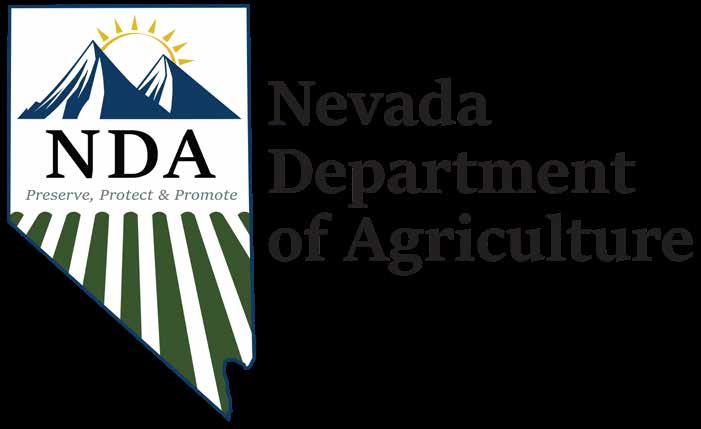

This month the Nevada Department of Agriculture (NDA) celebrated Agriculture Day on March 19, as proclaimed by Governor Lombardo. It’s a day to recognize the vital role agriculture plays in supplying food, fuel, and fiber to our state, thanks to the dedication of hardworking producers, ranchers and farmers.
To mark this occasion, the NDA invited state lawmakers, elected officials, and board members to join us for tours at the Sparks office. I hope these tours highlighted the essential work of each division in preserving, protecting and promoting Nevada agriculture.
A special thank you to our Nevada producers for their ongoing contributions.
With gratitude,
Director Goicoechea
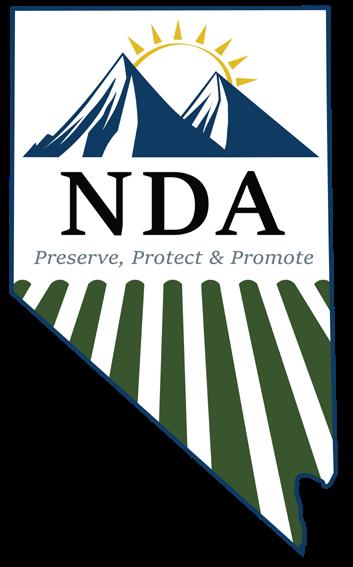
The NDA has a new look!
The Nevada Department of Agriculture (NDA) has an updated logo to represent Nevada’s diverse landscapes and the agriculture produced in the state.
“From the mountains to rangelands, crops to livestock, we hope this new logo is a reflection of everything we represent in Nevada, and our dedication to preserve, protect and promote Nevada agriculture.”
- NDA Director J.J. Goicoechea
You may notice a change in the appearance of information coming from the NDA. The NDA is proud to unveil an updated logo to represent Nevada’s diverse landscapes and the agriculture produced in the state. This new logo will be implemented with new materials going forward, but older resources may continue to include the old logo. These resources are still relevant and accurate.
Learn about the benefits of becoming a CACFP partner
Is your organization interested in becoming a Child and Adult Care Food Program (CACFP) partner this year? The Division of Food and Nutrition is hosting a virtual training on Tuesday, April 2. In this training, you will learn the basics of CACFP, how it can benefit your organization and what the program requirements are. RSVP to Ashley Ziemer at aziemer@agri.nv.gov.
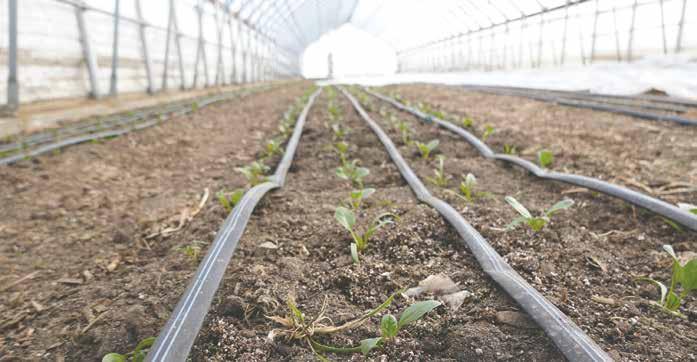
Seed retailers and wholesalers in Nevada will be required to pay annual fees
The NDA’s Seed Program is implementing annual fees for seed retailers and wholesalers operating in the state, as per changes to NRS 587.077 and NRS 587.083 approved in 2022. Wholesalers selling seed for resale must obtain a Seed Wholesaler License costing $750, while retailers need a Seed Retailer License for $75. These licenses must be acquired by July 1 each year and are valid for the fiscal year. For questions, please contact program staff via phone at (775) 353-3711 or email at seed@agri.nv.gov
Nevada food and agriculture Q4 trade report available
The Nevada Food and Agriculture Trade Report for the fourth quarter of 2023 is now available. In the latest report, Nevada’s total exports reached $76 million, with South Korea maintaining the lead as largest trading partner and miscellaneous edible preparations leading as the top export.
See page 23 of this magazine and/or this link: https://agri.nv.gov/uploadedFiles/agrinvgov/ Content/Administration/Global_Trade/2023_ Trade%20Report_Q4_Final_March2024.pdf
South 21st Street • Sparks, NV 89431 | agri.nv.gov
News from the Desk of NDA Director Goicoechea 405
The Progressive Rancher www.progressiverancher.com 18 APRIL 2024

The 2023-2024 Farm2Food Accelerator Participants celebrate graduation
Earlier this month, the NDA proudly celebrated the graduation of the latest Farm2Food Accelerator Program cohort! The Farm2Food Accelerator Program is designed to help Nevada women farmers and entrepreneurs with value-added food or beverage products, or product ideas, grow their business and expand into new markets. The NDA is proud to support women in our community in diversifying their agricultural goods into new finished products to increase their profitability and expand their market season. Congratulations ladies!
Report stranded livestock
As we enter calving season, you may notice what appear to be abandoned newborn calves. If you happen to come across newborn or young calves, we urge you to refrain from picking them up or intervening. It is crucial to allow the mother to return to her offspring.
Should you encounter any other livestock in locations where they do not appear to belong, please reach out to the NDA at 775-753-1360 or 775-353-3709 for assistance. Your cooperation in safeguarding the wellbeing of livestock is greatly appreciated.
Be part of Nevada history
Does your family have a long history of farming or ranching on the same land in Nevada? The Nevada Centennial Awards Program recognizes agricultural families who have owned and operated the same land for 100 years or more!
Elko Lab offering testing
The NDA Animal Disease Laboratory is now open and offering testing for trichomoniasis and equine infectious anemia (Coggins). This additional lab location will allow for increased processing capacity and decreased wait times. Talk to your vet about submitting testing to the Lab in Elko.
Susan Allen
Sarah Catalano
Jeannie Damonte
Danielle Goodwin
Cheyenne Kyle
Cecilia Leming
Autumn Pike
Marcie Pinkerton
Cindy Trejo
Melanie Young
Do you own a livestock scale?
Make sure we have your contact information! The NDA is updating contact information for all livestock scale owners to ensure proper and efficient communication. Livestock scale inspection schedules can be impacted by weather and mechanical failures. To ensure continuity of commerce, the NDA needs to confirm contact information to notify livestock scale owners of delays in inspections and to reschedule inspections to meet industry needs. Please fill out the form below to ensure we have up-to-date contact information, including an email address.
Job Opportunities
Agriculturalist 1 (Sparks)
Agriculture Inspector 2 (Sparks) seasonal Brand Inspector 1 (Elko)
Division of Plant Health and Compliance Deputy Administrator (Sparks)
Field Assistant 2 – Predatory Animal and Rodent Control (Fallon)
Program Officer 1 (Elko)
Public Health Rating & Survey Officer (Las Vegas) Weights and Measures Inspector 2 (Elko)
Keep up to date with all NDA job openings at https://nvapps.state.nv.us/NEATS/Recruiting/ ViewJobsHome.aep
Let’s Think Meat
By Shayda Sanjideh
Nevada has become acutely aware of the gaps in our food supply chain, particularly when it comes to livestock industries. With limited options for in-state meat processing and inspections, many producers are required to send livestock out of state for processing and packaging. As a result, there are few options for local meat to be sold in state and contribute to Nevada’s food and agriculture economy. To address these challenges, the Nevada Department of Agriculture (NDA) is making changes to Nevada Administrative Code (NAC) 583 related to the regulation of meat and poultry processing, to create a Nevada State Meat and Poultry Inspection program.
The United States Department of Agriculture (USDA) Food Safety Inspection Service (FSIS) is ultimately in charge of ensuring a safe meat and poultry supply but can delegate this responsibility to a State. A state inspection program must operate under authorities that are “at least equal to” federal requirements. The changes to NAC 583 allow the NDA to enter into a cooperative agreement with USDA FSIS to act as a resource to ensure a safe meat and poultry supply to Nevadans. With this, the NDA can inspect meat and poultry for consumption within Nevada while also providing a closer level of support to our producers and processors.
Since a consumer cannot, or generally does not, watch their meat or poultry get processed, they rely on food safety regulations and inspection services to keep them safe from natural and man-made hazards that may exist in meat and poultry products. Ensuring that friends, families and communities have access to safe meat and poultry is one of the top priorities of the State Meat and Poultry Inspection Program – and should also be the priority of producers and processors, as a food safety outbreak could be detrimental to industry.
While the prospect of new regulations may seem scary, this program will diversify market opportunities, strengthen local supply chains, add workforce and economic opportunities, and ensure an adequate and safe meat and poultry supply. Here in Nevada, where USDA inspections can be difficult to schedule and costly, this is an effective option to allow for more meat and poultry processing in the state while providing support for the producers who keep us fed.
If you have questions about the Nevada State Meat and Poultry Inspection Program, please contact Shayda Sanjideh at ssanjideh@agri.nv.gov.
The Progressive Rancher www.progressiverancher.com APRIL 2024 19
5 1/2 Ton/ 1st Cutting (AND WE’RE SHORT ON WATER!)
MACBETH MEADOW BROME GRASS UP TO YOUR SHOULDERS
We run out of creek water about June 1, and Macbeth still kicked out the tons. We had to raise the swather to get through it!
Of the five meadow bromes on the market, Macbeth is the only one that excels on dryland or low water. A meadow brome will always be your highest yielding grass! Macbeth will have leaves about as wide as barley.



The Macbeth did extremely well! We take only one cutting and graze the rest, but it always cuts 31/2 ton which is excellent for 6200 ft-elev. We normally put 2 windrows together for bailing, but could only bale one windrow on the Macbeth.
*Jerry Hoagland, Seven High Ranch, Reynolds Creek, Owyhee Co, Idaho
TESTIMONIAL
Caldwell,
GREENWAY SEEDS
Forages Sold Nationwide And Canada”
in Caldwell, ID and Deerfield, WI
SWEET CORN SEED WITH ORDERS!
The Progressive Rancher www.progressiverancher.com 20 APRIL 2024
James Willis: Willis Ranch Cokeville, WY Alan Greenway Seedsman Over 50 Years Experience Greenway Seeds
ID Alan Greenway 208-250-0159 (cell) 208-454-8342 (message)
www.greenwayseed.com “Modern
Warehouses
FREE
Some choose to add 360-D dryland alfalfa for it’s 10-12 year longevity.
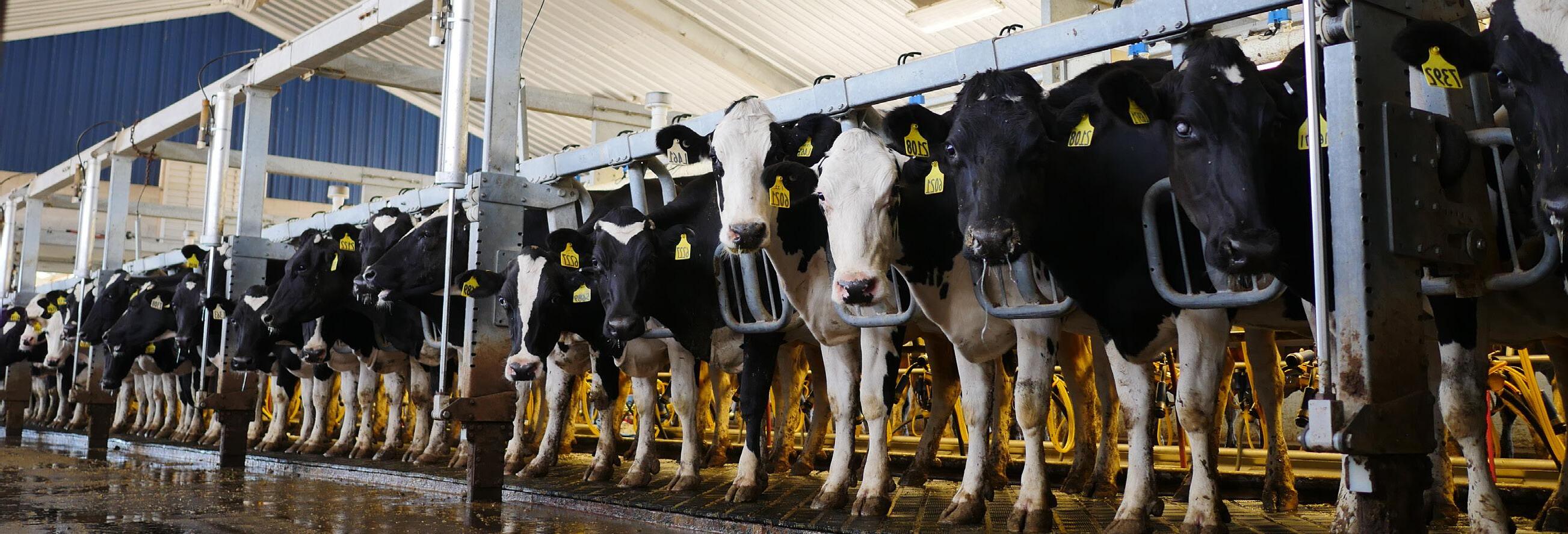
NDA NEVADA FOOD AND AGRICULTURE TRADE REPORT
2023- Q4
The Nevada Department of Agriculture (NDA) works with key trade partners, stakeholders and policy makers to ensure that the food and agriculture sector continues to see economic growth. To ensure that industry and partners are up-to-date, the NDA issues quarterly trade reports in addition to the in-depth biennium report. For any questions related to trade or economic development within the food and agriculture sector, please contact NVtrade@agri.nv.gov. All data is from the U.S. Census Bureau, USA Trade® Online. Inflation is adjusted using U.S. Bureau of Labor Statistics Consumer Price Index Inflation Calculator for each previous year to 2023.
FIGURE 1:
NEVADA FOOD AND AGRICULTURE EXPORTS BY YEAR AND QUARTER
$400 million
$300 million
$200 million
$100 million
FIGURE 2:
Nevada’s food and agriculture exports during the fourth quarter (Q4) of 2023 (October-December) reached $76 million, a decrease from the previous quarter. This quarter’s exports were lower than the Q4 average of 2022 ($102 million) and the Q4 export average for 2019-2023 ($92 million). During Q4, Nevada’s largest trading partner was South Korea, with total exports from Nevada accounting for roughly 44.84% of Nevada’s overall exports. Exports to Canada, South Korea, and Mexico remained relatively stable between the fourth quarters of 2023 and 2022, while exports to Japan and Peru declined. Canada’s exports rose from $19,232,735 in Q4 2022 to $19,767,843 in Q4 2023, marking a $535,108 increase in export value.


Miscellaneous Edible Preparations accounted for $20 million of Nevada’s export sales in Q4. Exports of meat and edible meat offal increased by $2 million between the third and fourth quarters of 2023, while Oil Seeds Etc.; Misc Grain, Seed, Fruit, Plant Etc. decreased by $2 million. FIGURE














Q4 Expected trend Export totals Q3 Q1 Q2 2019 $331,253,027 2020 $360,643,469 2021 $435,685,149 2022 2023 $347,699,549 $398,676.615 $30 million
Japan Mexico South Korea Canada
million 2022 2023 $17,051,592 $19,232,735 $26,245,328 $24,157,407 $7,012,593 $4,389,564 $19,767,843
$16,313,244 $19,109,507
$20 million
$35 million $5 million $25 million $15 million $10
Peru $8,644,079
TOP COUNTRIES FOR NEVADA FOOD AND AGRICULTURE EXPORTS IN Q4
30% 27% 11% 9% 7% 6% 5% 5% Miscellaneous Edible Preparations Coffee, Tea, Mate & Spices Meat And Edible Meat Offal Dairy Prods; Birds Eggs; Honey; Ed Animal Pr Nesoi Prep Cereal, Flour, Starch Or Milk; Bakers Wares Beverages, Spirits And Vinegar Oil Seeds Etc.; Misc Grain, Seed, Fruit, Plant Etc Edible Vegetables & Certain Roots & Tubers Read more in the 2021 Economic Analysis of the Food and Agriculture Sector in Nevada at agri.nv.gov/economic_development. agri.nv.gov NEVADA DEPARTMENT OF AGRICULTURE Page 1 The Progressive Rancher www.progressiverancher.com APRIL 2024 21
3: COMMODITY EXPORT BREAK DOWN
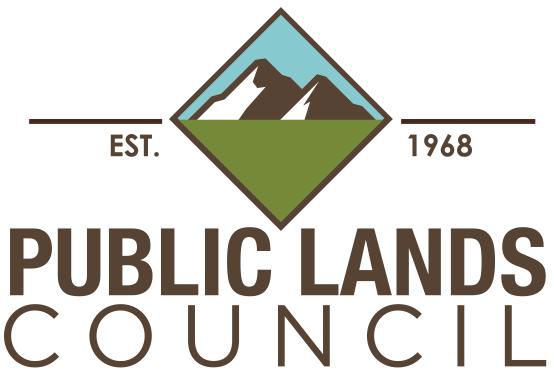
THE ROUNDUP
Administration: Biden admin releases final ruling aiming to curb gas flares, methane emissions on federal lands
Interior Department rule aims to crack down on methane leaks from oil, gas drilling on public lands, The Hill - The Biden administration issued a final rule Wednesday aimed at curbing methane leaks from oil and gas drilling on federal and tribal lands, its latest action to crack down on emissions of methane, a potent greenhouse gas that contributes significantly to global warming. The rule issued by the Interior Department’s Bureau of Land Management will tighten limits on gas flaring on federal lands and require that energy companies improve methods to detect methane leaks that add to planet-warming greenhouse gas pollution. The action follows a more comprehensive methane-reduction plan announced by the Environmental Protection Agency in December. The plan, announced at a global climate conference in the United Arab Emirates, targets emissions from existing oil and gas wells nationwide, rather than focusing only on new wells, as previous EPA regulations have done. It also regulates smaller wells now required to find and plug methane leaks.
Gray Wolves: ID reduces wolf trapping season to protect grizzly bears; 3 gray wolves spotted inside the N. NV border Ruling shortens Idaho’s wolf trapping season, The Spokesman-Review- A federal judge’s ruling will shorten Idaho’s wolf trapping season by as many as nine months to prevent potential harm to threatened grizzly bears. The ruling issued this week by federal judge Candy W. Dale at Boise applies to much of the Panhandle and Upper Snake regions –the parts of the state that have established grizzly bear populations – and the Clearwater and Salmon regions where grizzlies occasionally frequent. It makes wolf trapping and snaring illegal in grizzly bear habitat between March 1 and the end of November – the time bears are not hibernating. The effect of Dale’s order differs depending on land ownership. On private land that is open to wolf trapping year-round, the order lops off nine months of the season. On public land, it scuttles about six weeks of the Nov. 15-to-March 31 season.
Nevada Department of Wildlife Investigating Possible Wolf Sighting Near Elko, 2 Nwes
Nevada-
On March 17th a helicopter pilot spotted three suspected wolves near Merritt Mountain and contacted the Nevada Department of Wildlife. That report was given to NDOW biologists, and they immediately coordinated with the United States Fish and Wildlife Service on a plan to thoroughly search the area to confirm the sighting, according to a release from NDOW. Search efforts have led to the locating of tracks in the area, with the freshest set leading toward the Idaho border. NDOW biologists continued ground surveys and were able to measure track dimensions consistent with a wolf. The biologists then installed trail cameras, collected scat, and explored locations for opportunities to collect hair samples. The collected samples were sent off for DNA testing and the test results are expected within the next several days. “Nevada is not a historic habitat for wolves, and we’ve had very few confirmed sightings in the state,” said NDOW Director Alan Jenne. “Wolves are not known to reside in the state of Nevada, but we know that they may occasionally cross state lines for brief periods.”
Wildfire: CO anticipating dangerous fire season as dry conditions increase risk; Coconino County, AZ approves funding to restore forests before fire season
A warm, dry spring is forecasted for Colorado. That could be a recipe for wildfires, Colorado Public Radio- Parts of Colorado face an increased risk of dangerous wildfires due to abnormally dry and warm conditions forecasted for late spring and early summer, fire and climate experts say. The most wildfire-prone conditions from March through June are expected in southeastern Colorado, according to a seasonal outlook from the National Fire Information Center. “There is a lot of dead fuel out there,” Nickolai Reimer, a wildland fire meteorologist with the Rocky Mountain Area Coordination Center, a federally directed consortium of land managers that coordinate wildfire response. Researchers with the National Oceanic and Atmospheric Administration’s Climate Prediction Center say it’s likely much of the state could be warmer than normal through June and predict that drought conditions will linger or even expand in parts of Colorado. That increases the likelihood that wildfires could ignite and spread faster and grow bigger.
Coconino County shores up funding for forest restoration in Flagstaff, Williams, FronterasCoconino County has approved nearly $8 million for forest restoration projects on the west side of the San Francisco Peaks in Flagstaff and on a mountain overlooking the city of Williams. The county’s Board of Supervisors approved $7.6 million of capital expenditures for both the Upper Rio de Flag watershed overlooking Flagstaff and Bill Williams Mountain. The spending package comes weeks after
a pair of studies found that Flagstaff could suffer as much as $3 billion in damages from a major fire on the Peaks. A similar report in 2016 found that the economic impacts to Williams could reach $700 million. Federal dollars are also at play. The Forest Service will spend about $19 million to thin forests in both regions.
Wildlife: WA proposes new plan for bull trout introductions in Pend Oreille River basin; Champions of the northern spotted owl cry foul on Interior’s plan to kill different owl species that outcompetes the NSO
Agencies consider bull trout introduction at Sullivan Lake, Washington Department of Fish & Wildlife- The Washington Department of Fish & Wildlife (WDFW), the U.S. Fish & Wildlife Service (USFWS), and the Kalispel Tribe Natural Resources Department are proposing to introduce bull trout into Sullivan Lake and Harvey Creek near Metaline Falls in Pend Oreille County. Beginning in 2017, the USFWS and stakeholders within the Lower Pend Oreille River watershed conducted an analysis of the feasibility of restoring bull trout within the watershed. Sullivan Lake and its primary tributary, Harvey Creek, were identified through that analysis as the portion of the Lower Pend Oreille with the highest likelihood of establishing a bull trout population. “With the lake’s cold, clean water, suitable spawning tributary, lack of nonnative competitors and abundant forage, we believe this introduction will be successful and could be the first step in local recovery for bull trout,” said Chris Donley, WDFW Region 1 Fish Program manager. Establishment of a self-sustaining population of bull trout could provide a source population for future conservation introductions within the Pend Oreille River basin. “The recovery of bull trout within the basin is identified as a key action in the USFWS’s bull trout recovery plan,” said Brad Thompson, state supervisor with USFWS. “The recovery of threatened and endangered wildlife requires many partners, and I’m encouraged by the strong collaboration of federal, state, and tribal partners on this project.”
Will killing owls help similar species? Groups oppose plan, Modesto Bee- The lethal management strategy may replenish the dwindling population of the northern spotted owl, a similar species native to the forests in Washington, Oregon and northern California. Both birds are protected under federal law. The northern spotted owl, however, is threatened with extinction — and the “more aggressive” barred owl has invaded its territory and poses a major threat, the USFWS says. Dozens of wildlife and animal welfare organizations are objecting to the government’s proposed culling of nearly 500,000 barred owls in California, Oregon and Washington over three decades, according to a March 25 letter to the Secretary of the Interior. Deemed a “reckless

The Progressive Rancher www.progressiverancher.com 22 APRIL 2024
plan to unleash ‘hunters’ to implement a plan of mass, sustained killing,” the letter signed by 75 groups urges Interior Secretary Deb Haaland to take action against it. The U.S. Fish and Wildlife Service’s Barred Owl Management proposal, published in November, warns it’s necessary to stop the invasion of barred owls, which are native to eastern North America, on the West Coast. Described as the top threat to the northern spotted owl’s survival, they are considered an emerging threat to the California spotted owl.
ESA: USFWS finalizes blanket ESA protections, reverses Trump approach Biden ESA rules reverse Trump moves and revive big debate, Politico- The Fish and Wildlife Service and NOAA Fisheries reimposed stricter Endangered Species Act rules Thursday that reverse some of the Trump administration’s most controversial environment-related initiatives. Capping several years of study, the two federal agencies announced the final ESA rules that they say will better protect species and their habitats but that critics contend will overly burden industry and property owners. “These revisions underscore our commitment to using all of the tools available to help halt declines and stabilize populations of the species most atrisk,” Fish and Wildlife Service Director Martha Williams said in a statement. Taken together, the three final rules drew approximately 488,000 public comments during the review period. While many of the comments were duplicates, amounting to signatures on form letters, the sheer volume far surpassed that for most federal regulatory actions. It also underscored how the Endangered Species Act still looms large in Congress, courtrooms and beyond 51 years after President Richard Nixon signed it into law.
Multiple Use: BLM provides a draft map for proposed UT solar farms under the Western Solar Plan; WY court rules against BLM leasing 120,000 acres for oil and gas drilling
Where the BLM wants more solar farms in Utah, Salt Lake Tribune- The U.S. Bureau of Land Management wants to be a landlord to more solar energy development in Utah and across the West, but it has a few rules: • Keep the panels off the hillsides to avoid erosion and visual blight. • Keep them near existing or planned power lines to avoid building new ones. • Keep the cows away. The BLM, which manages 42% of Utah land, has put out its draft environmental impact statement for utility scale solar development, and its preferred choice would make 3.8 million acres in the state available for solar farms. The draft is open for public comment until April 18. The federal agency looked at five alternatives for its “programmatic” EIS, which is intended to identify areas across 11 Western
states where permitting and leasing for solar power plants could be expedited. Any individual project still would need to go through a separate approval process. Utah is considered a top-tier state for solar development because of its high number of sunny days year-round.
Court rules against BLM leasing 120,000 acres for oil and gas drilling, Buckrail- On Friday, March 22, U.S. District Court Judge Christopher R. Cooper sided with conservation groups regarding two separate lawsuits challenging the Bureau of Land Management (BLM) sales of 120,000 acres in Wyoming that was leased for oil and gas development. According to the ruling, the BLM didn’t provide adequate environmental analysis, or fully explain the impacts future drilling could have on the climate, big game migration and sage grouse. The BLM also used outdated data on drilling when the leases were purchased back in 2022. The Judge’s Memorandum and Order states that over two days in June 2022, the BLM finalized six lease sales of federal land for oil and gas development, with the largest sale occurring in Wyoming, and this violated the National Environmental Policy Act (NEPA). “The Court agrees with the Conservation Groups that BLM erred at times when assessing the Wyoming sale’s impact on groundwater and wildlife and in explaining how its analysis of greenhouse gas (GHG) emissions influenced its leasing decisions,” Cooper wrote in the Memorandum.
Wild Horse and Burro: BLM to gather 350 Wild Horses in Caliente Complex, NV
BLM to begin Caliente Complex wild horse bait and water gather operation, Bureau of Land MangementThe Bureau of Land Management Ely District, Caliente Field Office on or around April 1 will begin a wild horse gather in the Caliente Complex. The Complex is located within a forty-mile radius of Caliente, in Lincoln County, Nevada. The BLM will conduct gather operations utilizing temporary bait and water traps consisting of a series of corral panels stocked with water/forage; no helicopters will be used. The Caliente Complex has nine herd areas that encompass over 911,890 acres of public and private lands. The BLM manages the Complex for zero wild horses due to insufficient forage and water to sustain healthy and viable herds long-term. A helicopter survey conducted in February 2024 documented 1,022 wild horses within and directly outside the herd areas. The most recent gather was completed in 2019. The BLM plans to gather and remove approximately 350 wild horses. The purpose of the gather is to prevent undue or unnecessary degradation of the public lands associated with excess wild horses and to restore a thriving natural ecological balance and multiple-use relationship on public lands, consistent with the provisions of Section 1333(b) of the 1971 Wild Free-Roaming Horses and Burros Act.
Grizzly Bears: First grizzly sighting in Teton area confirms bears are waking from hibernation
First Teton Area Grizzly Spotted Just Outside Park And No, It’s Not 399, Cowboy State DailyGrand Teton National Park announced the first grizzly of the season was spotted Tuesday, only two days after the first grizzly of the season was spotted just outside Grand Teton National Park in the Jackson Hole area. While Yellowstone’s grizzlies have been waking up for the last few weeks, the first grizzly of Grand Teton usually emerges in the latter half of March. It seems that life moves at a more luxurious pace in Jackson, even for grizzlies. The first grizzly of the season in Grand Teton might have been spotted Tuesday, but several people posted about a young male grizzly in Buffalo Valley 3 miles east of Grand Teton two days earlier. Local wildlife guide Ryan Kempfer even captured it on video. “I think what we’ve all experienced just in these last couple of days is that even though there’s snow on the ground and cooler temperatures during the day, we’ve got bears up on the landscape moving around,” he told Cowboy State Daily. And to answer the question all Wyoming bear-lovers are asking — not, these first bears are not 399, the most famous bear on the planet.
Industry News: Ag, water, and environmental law experts convene at University of Nevada Ag, water and environmental law experts convene at University of Nevada, Reno, Nevada TodayPressing issues face the American West regarding the future of agriculture and the management of land, water and other natural resources. The National Agricultural Law Center is convening the 2nd Annual Western Agricultural and Environmental Law Conference on June 13-14 on the University of Nevada, Reno campus, with a speaker lineup of experts geared to provide analysis and insights into some of these challenges and the laws and policy affecting them. “The environmental and agricultural issues facing the American West are as unique as its geology, climate and culture,” said Harrison Pittman, the director of the National Agricultural Law Center, which is a unit of the University of Arkansas System Division of Agriculture. “Our lineup for this second conference will provide a deep dive into the challenges that have no peer in other parts of the country.” Some of the topics on this year’s program include: Instream water rights and the future of irrigated agriculture, The future of pesticides in Western states, including the latest legal developments and trends, The 2024 Farm Bill, public lands and related federal issues, Insights into tribal agricultural development, State agriculture departments, and the regulation of agriculture and the environment, Water quality in the West and updates on the Clean Water Act.
...continued next page
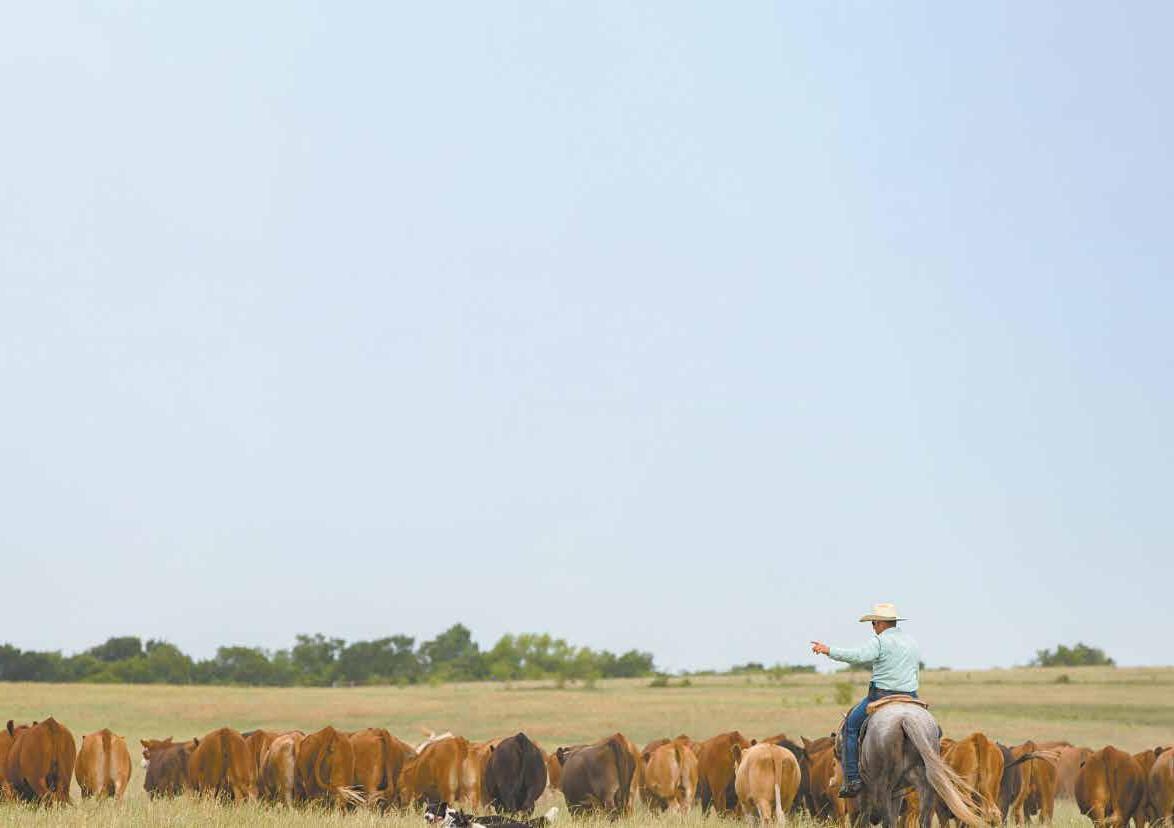
The Progressive Rancher www.progressiverancher.com APRIL 2024 23
Wildfire: Texas & SW Cattle Raisers Association still accepting requests for financial support post-fire
TSCRA Disaster Relief Fund still accepting applications from wildfire victims, Beef Magazine- Texas & Southwestern Cattle Raisers Association (TSCRA) announced applications for financial aid through the TSCRA Disaster Relief Fund remain open for those cattle raisers impacted by wildfires in the Texas Panhandle and Western Oklahoma. The TSCRA Disaster Relief Fund, a 501(c)(3) nonprofit supporting ranchers and landowners impacted by disasters, will distribute financial assistance to reduce the economic burdens incurred by cattle raisers from recent wildfire damages that were not covered through insurance or other means of aid. “We activated the Disaster Relief Fund within 48 hours of cattle raisers being impacted by wildfires,” says Carl Ray Polk Jr., Texas & Southwestern Cattle Raisers Association president. “We’ve received more than 1,300 donations that exceeded $1.3 million to date, with more donations still coming in. Ranchers and landowners from disaster-declared counties impacted by recent wildfires are eligible to apply in the open application period. The current application period does not have a set close date, and it will remain open to ensure applicants can access funding. However, individuals are encouraged to apply within the first 60 days of the damage. Applicants are not required to be a member of Texas & Southwestern Cattle Raisers Association to qualify for aid. “It’s our goal as an organization, that as long as we have funds available and wonderful people are making these donations, we will get funding to ranchers and landowners in need of financial support,” Polk says. To apply for funding, individuals must submit an online application detailing loss or damages because of the fires. Applicants should attach documentation, which may include insurance policies and claims, inventory records, photographs and other reports. Donations continue to be accepted to support ranchers and landowners impacted by this disaster Learn more about the TSCRA Disaster Relief Fund, including information on how to donate or apply for funds, here: tscra.org/disaster-relief-fund/
‘Critical wildfire risk’ present in part of Colorado this week, Denver Gazette- Statewide snowpack in Colorado might be at about 109 percent of the typical norm for April 1, but locals should know that wildfire risk still exists. According to the most recent ‘hazards outlook’ map published by the National Weather Service, a critical wildfire risk, along with a risk of high winds, will be present in much of the Eastern Plains region on Friday, April 5. While winds are expected to be particularly problematic, hotter temperatures will also be contributing to risk, with Friday expected to bring temps in the 70s to this part of the state. It’s always important to follow ‘best practices’ when it comes to fire safety in Colorado, especially so when hot, dry, and gusty conditions are present. Those in the impacted area and potentially elsewhere should avoid burning. Using heavy equipment outside can also cause problems if sparks hit dry grass. Follow along with weather alerts on the National Weather Service website.
Congress: With Farm Bill still stalled, some agriculture groups pushing for increase to conservation funding
Farm groups want lawmakers to spend more on conservation, E&E News- A coalition of farm and environmental groups is pressing Congress to boost funding for land conservation in the next fiscal year, after seeing those programs take a hit in the current fiscal year. The National Association of Conservation Districts, the National Farmers Union and others urged lawmakers Friday to provide at least $1.2 billion for conservation operations at the Natural Resources Conservation Service, up from $915 million in the recently enacted fiscal 2024 packages. Fiscal 2025 begins Oct. 1. The Biden administration requested $985 million for conservation operations in its budget plan released last month. Most of the money in question goes to technical assistance for farmers and other landowners, for which the administration requested $869 million. An increase is especially needed given previous declines in funding and as the Ag Dept ramps up programs in response to legislation such as the Inflation Reduction Act. “Providing strong funding for [conservation technical assistance] is now more important than ever as NRCS and partners work to administer historic investments in voluntary conservation programs,” said a letter to appropriators in both chambers. It urged Congress to provide the full authorized amount for all farm bill conservation efforts, such as the Environmental Quality Incentives Program. The groups, also including the National Sustainable Agriculture Coalition, and the National Corn Growers Association, among dozens of others, wrote as Congress remains in limbo on the next five-year farm bill. The 2018 farm bill expired last Sept. 30 but has been extended one year.
Grazing: USDA to allocate up to $22M in partnerships to increase sustainable grazing practices
USDA seeks partnerships for conservation on grazing lands, Capital PressUSDA is investing up to $22 million in partnerships that expand access to conservation technical assistance for livestock producers and increase the use of conservation practices on grazing lands. USDA’s Natural Resources Conservation Service is accepting proposals through its Grazing Lands Conservation Initiative until May 26. “Privately owned grazing lands cover nearly 30% of the national landscape, which means we have a tremendous opportunity to address climate change and conserve natural resources through voluntary, private lands conservation,” Terry Cosby, NRCS chief, said in a press release. “NRCS enlists a wide variety of conservation practices to help livestock producers. These partnerships will also help us expand the footprint of conservation on grazing lands and could help better reach underserved producers,” he said. Project proposals for GLCI cooperative agreements will identify and address barriers to accessing grazing assistance for producers.

NvACD and NRCS Announce new Capacity Building Agreement
Growing Natural Resources Projects for Landowners in Nevada!
The purpose of this agreement, between the USDA Natural Resources Conservation Service (NRCS) and the Nevada Association of Conservation Districts (NvACD), is to build collaborative working relationships between NRCS, NvACD, external partners and producers in Nevada to increase and promote conservation projects and practices.
• Build the capacity of the NvACD and the 28 conservation districts through training and network opportunities.
• Reinvigorate long-range and annual planning with all willing conservation districts in Nevada.
• Enhance communication networks between NRCS, FSA and other USDA agencies, local governments, local partners, and other partners and agencies.
• Develop natural resource priorities with all willing conservation districts and other local partners in Nevada.
• Assist and help coordinate project lists based on the natural resource priority lists with all willing conservation districts.
• Assist conservation districts in writing and submitting grants, proposals, and completing NRCS applications with producers for projects based on the priority lists.
• Assist each willing conservation district in re-establishing the authority to administer an annual natural resource priority local working group that will identify local resource priorities and concerns for submission to the NRCS State Technical Committee.
For further information on the agreement, please refer to the NvACD website, www. nvacd.org, or contact:
Kevin Piper, Executive Director for NvACD at kevinpiper@nvacd.org
Connie Lee, Communications and Outreach at connielee@nvacd.org
The Progressive Rancher www.progressiverancher.com 24 APRIL 2024
BLM proposes stronger greater sage-grouse conservation plans
Analysis uses best science & lessons learned to benefit species and western communities
Media Contact: BLM_Press@blm.gov
The Bureau of Land Management (BLM) is announcing a draft plan to strengthen greater sage-grouse conservation and management on public lands, informed by the best-available science and input from local, state, federal, and Tribal partners. The draft plan is built on decades of partnership, research, and on-the-ground knowledge and experience in maintaining, protecting and restoring healthy sagebrush habitats.
Greater sage-grouse rely on sagebrush lands for all aspects of their life cycle to meet seasonal needs for food, cover and reproduction. A local population may need up to 40 square miles of intact landscape to stay healthy. Populations once in the millions now number fewer than 800,000, largely due to habitat loss exacerbated by climate change, such as drought, increasing wildfires, and invasive species. Protecting and restoring sagebrush on BLM-managed public lands across the West is critical not just for greater sage-grouse, but also for the health of western communities and other iconic Western species that rely on healthy sagebrush, including mule deer, pronghorn, and the pygmy rabbit. Additionally, these collaboratively developed landscape-level plans will ensure that other multiple uses of BLM sagebrush lands – including clean energy projects – move forward in a manner that limits impacts to sensitive resources and can also help combat climate change—a main driver of greater sage-grouse habitat loss.
“The majesty of the West and its way of life are at stake. Sagebrush lands are places where people work and play, and they are the headwaters for the West’s major rivers,” said BLM Director Tracy Stone-Manning. “Joint efforts to conserve the greater sage-grouse and its habitat led to the largest collaborative conservation effort in our history, and we are building on that work, together with our partners, to ensure the health of these lands and local economies into the future.”
The BLM manages the largest single share of sage-grouse habitat in the United States—nearly 67 million acres of 145 million total acres. The draft plan offers a range of alternatives for sustainable management of these lands. Balancing a consistent management approach across the range while addressing conditions and policies unique to individual states, BLM will be able to work more effectively with state and local managers to protect and improve sagebrush habitats on public lands. Alternatives in the proposal build on the most successful components of the plans that the BLM adopted in 2015 and updated in 2019. The draft plan incorporates new sage-grouse conservation science and lessons learned, accommodating changing resources conditions while increasing implementation flexibility. The agency considered nearly 1,900 comments gathered during an initial public scoping period and information shared by state, local, federal, and Tribal partners in more than 100 meetings.
The BLM will hold 13 public meetings to answer questions and take further comments on the draft alternatives and analysis. Information on public meetings will be posted in the events column on the main page of the BLM website. In addition to actions guided by the management plans, the BLM is actively restoring and conserving sagebrush habitat across the West through the Biden Administration’s Investing in America agenda. Annually, the BLM invests approximately $35 million of its congressional appropriation in sagebrush ecosystem projects, supplemented by $123 million from President Biden’s Inflation Reduction Act and Bipartisan Infrastructure Law, and complemented by investments by state and local governments, Tribes, stakeholder groups, and private landowners.
The draft statement and plan amendments will open for public comment on 3/15. The comment period will end 6/13. More information on how to comment on this draft will be posted at www.blm.gov/sagegrouse. A final environmental impact statement is expected this fall, followed by Records of Decision in each state.
Churchill County FFA Chapter News
By Riggin Stonebarger, FFA Reporter | The Churchill County FFA Chapter has been very busy the last month, preparing for many exciting events throughout the next few months. As the upcoming event is the Nevada State FFA Convention, we will be having a few teams going to compete in the CDE competitions. The Career Development Events are events made to prepare an FFA member for that career. Some CDE’s are Veterinary Science, Livestock evaluation, Ag Sales, Meats Evaluation, and Horse judging.
We will have two teams competing March 25-28. The veterinarian science team;Mckinsey Ryon, Laci Peterson, Heather White, and Stephanie Tidwell, the Meat Evaluations; Madison Gregory, Jackson Barbie, Allie Fait, and Bailey Prinz, and the Employability skill competition; William Few, and Caitlyn Dock.
Aside from preparing for the Nevada State FFA convention We have also been preparing for our End of the Year FFA Banquet. The banquet will be on May 18th at the Churchill County Art Center Lariat Motel Facility! There will be a silent auction, catered dinner, awards ceremonies for the members, and a dance. Invitations will be sent out within the next few weeks to all members, families, and the community!
We have also been planning for an Ag day at Lahontan Elementary school on April 18th! Students at Lahontan elementary are going to get the opportunity to spend a whole day learning about the importance of agriculture, the future farmers of america (FFA) and Livestock! Our officers and members will be helping bring livestock to the school and help teaching about agriculture!
Although the end of the year for the former FFA Officers is slowly coming to an end there are still many exciting plans and activities for the next few months!
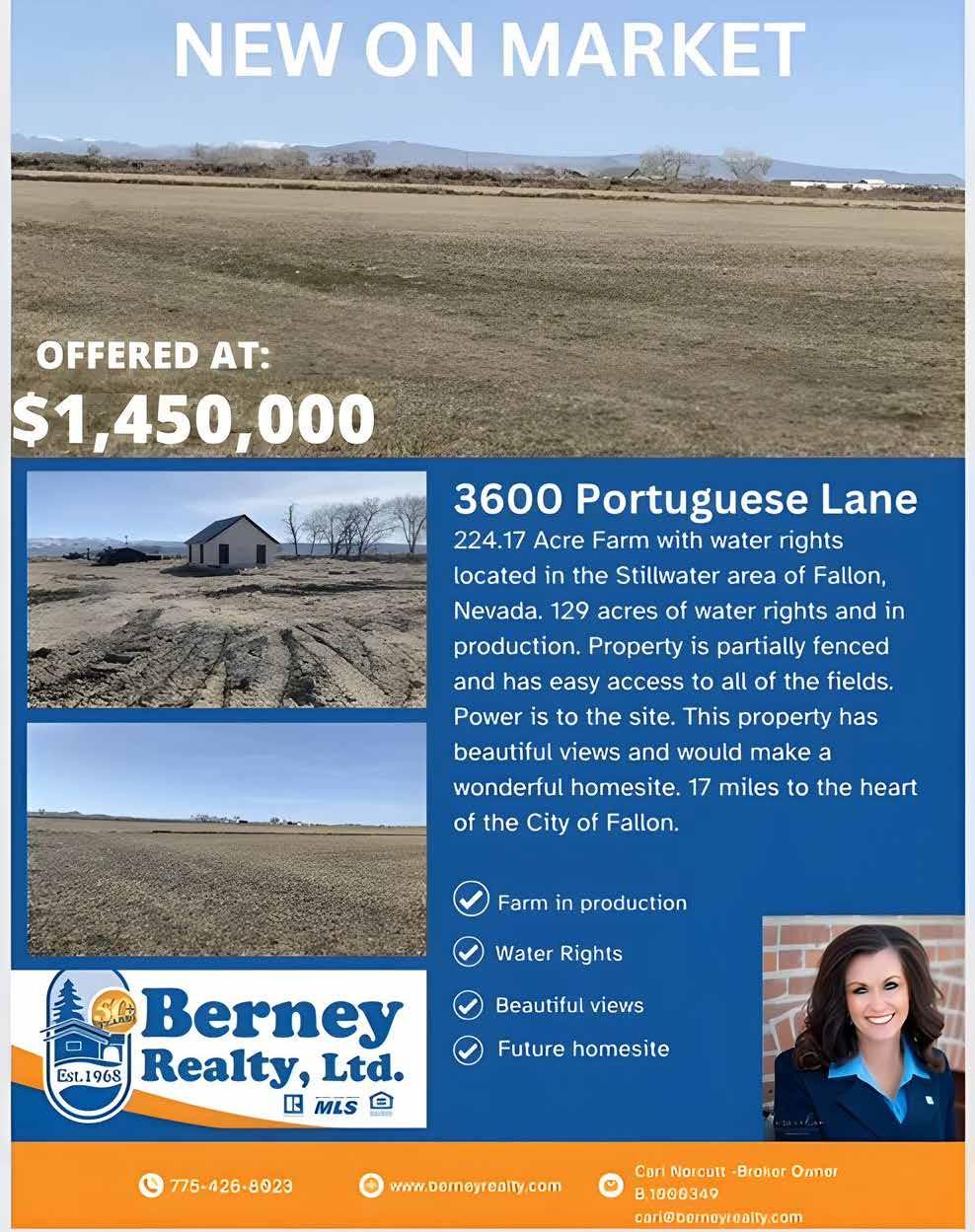
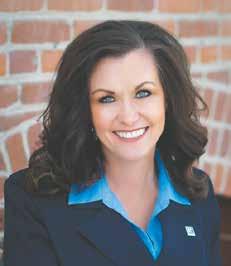
775-426-8023 | Cari Norcutt, Broker/Owner B.1000349 | cari@berneyrealty.com www.berneyrealty.com
The Progressive Rancher www.progressiverancher.com APRIL 2024 25
Cheatgrass Control with Herbicides to Improve Seeding Success: Renewed Interest on Rangelands
By Charlie D. Clements, James A. Young and Dan Harmon
Public land management agencies did not drop the use of herbicides in the late 1970s because they were afraid of the environmental consequences, they dropped them because they were afraid of the comments from the highly vocal general public. Congress stopped appropriating funds for the improvement of publicly owned rangelands to avoid criticism from environmental groups. The private ranching sector should have welcomed the new technology as a means of converting their own rangelands from cheatgrass dominated to perennial grass dominated rangelands to provide dependable forage as well as reduce wildfire risks associated with cheatgrass. Public land management agencies responded to the new national environmental review regulations, not with compliance, but by trying to avoid them. Coupled with reduced funding for range improvement practices, this policy replaced range improvement practices with grazing management.
It took a good two decades to reinvigorate the need for herbicidal weed control research to add to the toolbox of range improvement practices needed to combat cheatgrass-infested rangelands. This
rallying cry was loud and clear as resource managers screamed from the mountain tops that they needed a method for controlling cheatgrass on rangelands so that they could seed perennial grasses to suppress cheatgrass and wildfires. There were still individuals in the management agencies that remembered the early research of Dick Eckert, Ray Evans and James Young of the Great Basin Rangelands Research Unit based out of Reno, Nevada on the use of herbicides to control cheatgrass and seeding rangelands to perennial grasses. It was quickly recognized that as time had passed, the patents on the herbicides they were researching had run out, and the cost of renewing the registration of those herbicides was not of interest to the companies that had originally developed them. Paraquat was still available as a restricted use herbicide, but the weight of the obligatory spring seeding and no viable aerial application procedure highly limited its’ viable use on rangelands. Glyphosate arose as a new “miracle” herbicide, like paraquat, it binds to the soil particles in an inactive form and is applied in the spring after cheatgrass has germinated, but unlike paraquat, it does not kill cheatgrass instantly. In the prolonged


cold springs of the Great Basin, it takes a very long time for cheatgrass plants treated with glyphosate to die. Also, habitats treated with glyphosate increased the mortality of desirable species, especially residual perennial grasses. The application of glyphosate in mid-spring to late spring and then fallowed through the summer and seeded in the fall of the year has been reported to increase cheatgrass control and improve fall seeding efforts in rare cases.
By the late 1990s, a new family of herbicides, sulfonylurea compounds, showed some promise. The sales department of the manufacturing company and their technical support staff worked closely with federal public land management agencies and proposed a soil-active pre-emergent compound, sulfometuronmethyl, as an ideal herbicide for cheatgrass control. In the field however, sulfometuron-methyl, commonly known as OUST, showed excellent signs of controlling cheatgrass, but lacked the wide weed spectrum of efficacy and the summer year fallow residue levels needed to control broadleaf weeds. Following application, sulfometuron-methyl treated habitats were often converted to weed dominance of Russian thistle, tumble mustard and other broadleaf weeds that negated the moisture and nitrite storage of the fallow. Herbicide residues during the perennial grass seedling year were a problem as well, due to the failure to determine a correct rate of application. Several Intermountain Area states permitted special use labeling for sulfometuron-methyl for the control of cheatgrass on rangelands. By 1999 we were testing the use of sulfometuron-methyl on cheatgrassinfested rangelands using 0.50, 0.75 and 1.0 ounce per care rates. The manufacturers technical support and sale department staff recommended 1.0 ounce per care rate to effectively control cheatgrass, our replicated plots suggested that 0.50 ounce per acre rate controlled cheatgrass in the neighborhood of 70-74%, compared to 0.75 ounce per acre of 9699% and 1.0 ounce per acre rate of 96-99%, therefor dropping the 1.0 ounce per acre rate and sticking with the 0.75 ounce per acre rate We applied our plots using a ground rig and were very careful not to overlap passes which would double the rate in those strips, while also not missing areas which would not control cheatgrass and therefor would still have the presence of cheatgrass to consume moisture, uptake nitrogen and spread seed. Shortly thereafter, the use
The Progressive Rancher www.progressiverancher.com 26 APRIL 2024
Figure 1. The application of imazapic, Plateau, on Great Basin rangelands has resulted in promising results to control cheatgrass as well as open the window for successful seeding of perennial grasses to reduce cheatgrass densities and associated fuels.
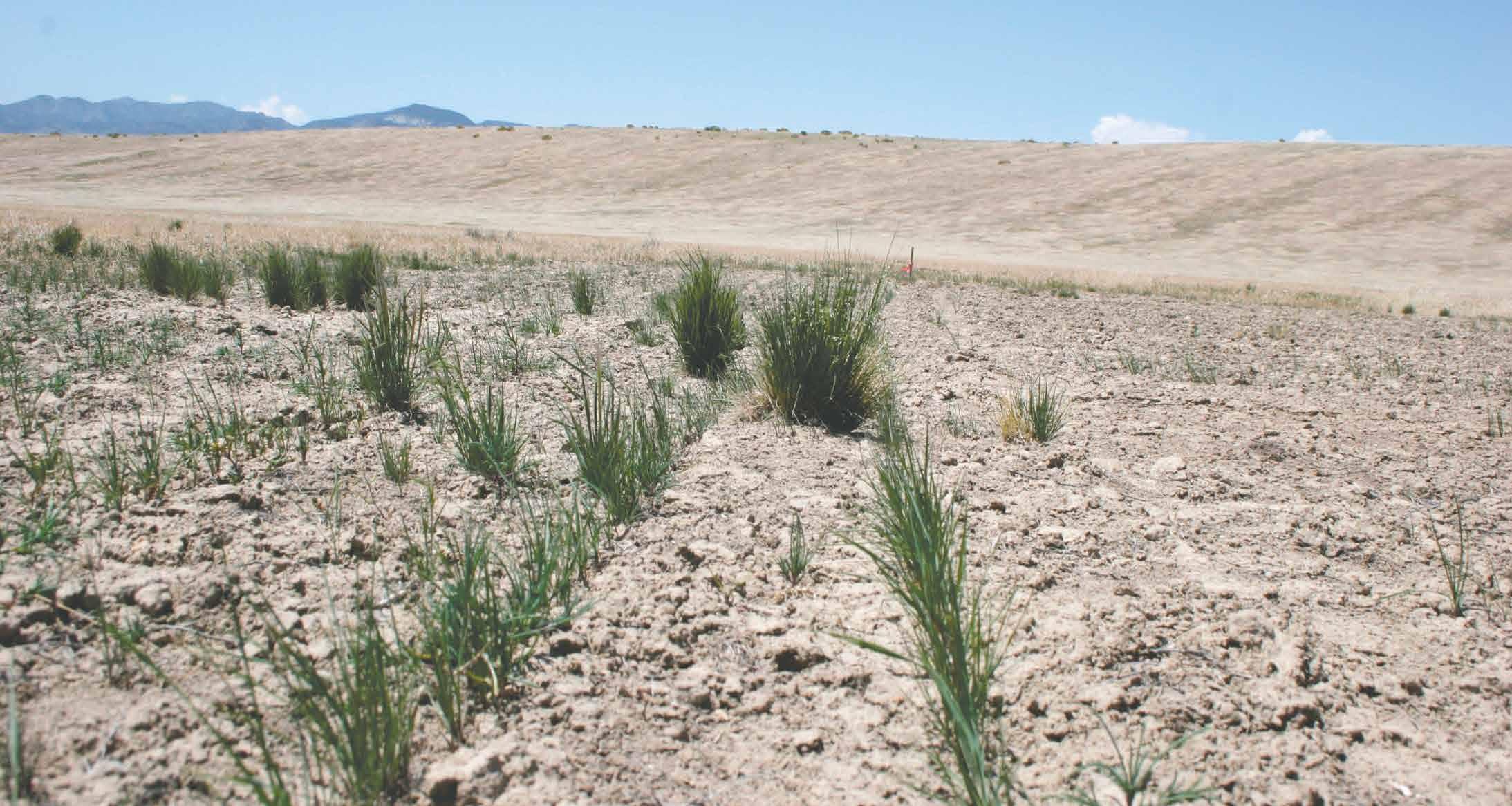
of sulfometuron-methyl on rangelands came to a halt when approximately 26,000 acres of burned habitat, in southeastern Idaho was treated with sulfometuronmethyl. Burned habitats are prone to wind erosion, which carried the residue of this herbicide across the Magic Valley of southeastern Idaho, causing millions of dollars in damage to numerous crops. In red bold letters on the label is the warning “do not apply on erodible soils”. This is why it is critical to follow the label when applying any herbicide, otherwise you take the risk of misapplication and removing a viable tool in the integrated range improvement toolbox.
While the dust was still settling from this disaster, an herbicide from another family, Imazethapyr, was proposed for cheatgrass control and seeding. The product from this family, imazapic or commonly known as Plateau, is the most commonly and widely used soil-active pre-emergent herbicide used on Intermountain West rangelands. Imazapic is both a foliar and soil-active herbicide, with wheatgrasses being reported to be more tolerant of this herbicide than cheatgrass. Technical support staff suggested this soil-active herbicide be applied at 6oz per acre rate, and as we tested this herbicide at 4, 6, 8 and 10 ounce per acre rate on numerous habitats and soil types thr4oughout the Great Basin we agreed with the 6 ounce per acre rate in most cheatgrass-infested habitats. The lower rate of 4 ounce per acre performed very poorly at controlling cheatgrass with control levels in the neighborhood of 41-44%, whereas the 6 ounce per acre rate controlled cheatgrass in the 95-98% level (Fig. 1).
The higher rates provided some interesting results as well, especially when medusahead was present in the environment, whereas 6 or 8 ounce per acre rate controlled cheatgrass yet had no effect on medusahead. Medusahead control was only established sufficiently at the 10 ounce per acre rate, which is important when following up these herbicide applications with the seeding of perennial grasses. Again, these applications worked the best when applied in the fall,
fallowed for one year and seeded to perennial grasses. In our field experiments, imazapic residue was present in the soil for about 12-15 months, therefor, as the residue levels are declining as the seeded species are going through the germination process and emerging in the absence of herbicide residue and reduced cheatgrass competition. This reduced competition resulted in significant available soil moisture and nitrogen that are essential for seedling survival and establishment (Fig. 2). We did experience prolonged residue of imazapic when applied at 8 ounce per acre rate in more arid environments with silty loam soils which resulted in initial cheatgrass control, but was also followed by continued cheatgrass control into the second year and converted to Russian thistle on years 2-4, therefor limiting any seeding success following application.
Sulfometuron-methyl was repackaged with a broadleaf weed herbicide, chlorosulfuron, commonly known as Telar. This new product on the market, sulfometuron-methyl chlorosulfuron was commonly known as Landmark. Our past experience with sulfometuron-methyl on cheatgrass control in combination with our experience with chlorosulfuron on perennial pepper weed allowed us to test this herbicide on rates we were familiar with. At an application rate of 1.5 – 1.75 ounce per acre rate, we experienced 97-99% cheatgrass control with additional broadleaf weed control most years (Fig 3, next page).
In the process of testing this product, Dupont range herbicide department was sold to Bayer Chemical and the patent of Landmark was not part of the deal, therefor the removal of this product on the market. There are still managers that experienced the success of this product and continue to purchase sulfometuronmethyl and chlorosulfuron to make their own blend to achieve excellent cheatgrass control with an added wide weed spectrum of efficacy or the summer year fallow activity residue levels needed to control broadleaf weeds.
...continued next page
Figure 2. It is essential to control cheatgrass at high levels to decrease cheatgrass densities and allow seedlings of seeded species to germinate, emerge and establish in the absence of cheatgrass competition.
The Progressive Rancher www.progressiverancher.com APRIL 2024 27
...continued from previous page
One of the more recent soil-active herbicides to be tested on rangelands is Indaziflam, commonly known as Esplanade or Rejuvra. Esplanade is registered for roadside use, whereas Rejuvra is registered for rangeland use. Indaziflam provides a broad-spectrum pre-emergence control of several annual grasses and broadleaf weeds. Indaziflam has low water solubility, which can partially explain its’ increased soil activity compared with other commonly recommended herbicides, such as imazapic. Indaziflam application is recommended at 5 ounce per acre rate, with research being conducted at higher rates as well. Indaziflam binds to the surface soil, about top 2”, and this activity persist in the soil layer for about 3 years in our experience. Due to this prolonged activity, seeding of perennial grasses are not recommended until the 3-year fallow period, which is a long period of time compared to the more commonly used soilactive pre-emergent herbicide, imazapic. On habitats that have decent residual perennial grass abundance, the application of indaziflam can be very beneficial as the control of annual grasses releases limited resources such as soil moisture and nitrogen. We have experienced habitats with decent perennial grass abundance treated with indaziflam to experience exceptional perennial grass vigor, stay green into early August and therefor decrease cheatgrass densities and associated fuels, reduce the chance, rate, spread and season of wildfire and improve forage quality for 3-4 years.
Working closely with the chemical company, UNVU, and regional stewardship manager, Harry Quicke, our initial applications of indaziflam at 5 ounce per acre rate on cheatgrass-infested rangelands with poor residual perennial grass densities ranged from 86-94% in year-1, while by year-3 cheatgrass control increased to 92-96%. Efficacy of indaziflam on habitats represented with good perennial grass densities ranged from 96-98% (Fig. 4).
Development of new herbicides is so expensive that a clear market must be demonstrated before any chemical company is willing to undertake such a project. At the same time, ensuring environmental and human and health safety, which is responsible for much of the development cost, is absolutely essential. The sulfometuron-methyl catastrophe did nothing to solve these concerns, and a whole lot to damage the efforts to control cheatgrass. Research is needed on multiple levels, as the cheatgrass problem is not going away on its’ own. As each new promising herbicide has appeared, the ever-increasing frustration with cheatgrass and associated resource damages has led range managers to jump on the bandwagon without scientifically approaching the proposed control method. This type of approach can certainly lead to the loss of tools in cheatgrass control efforts that we cannot afford to lose.

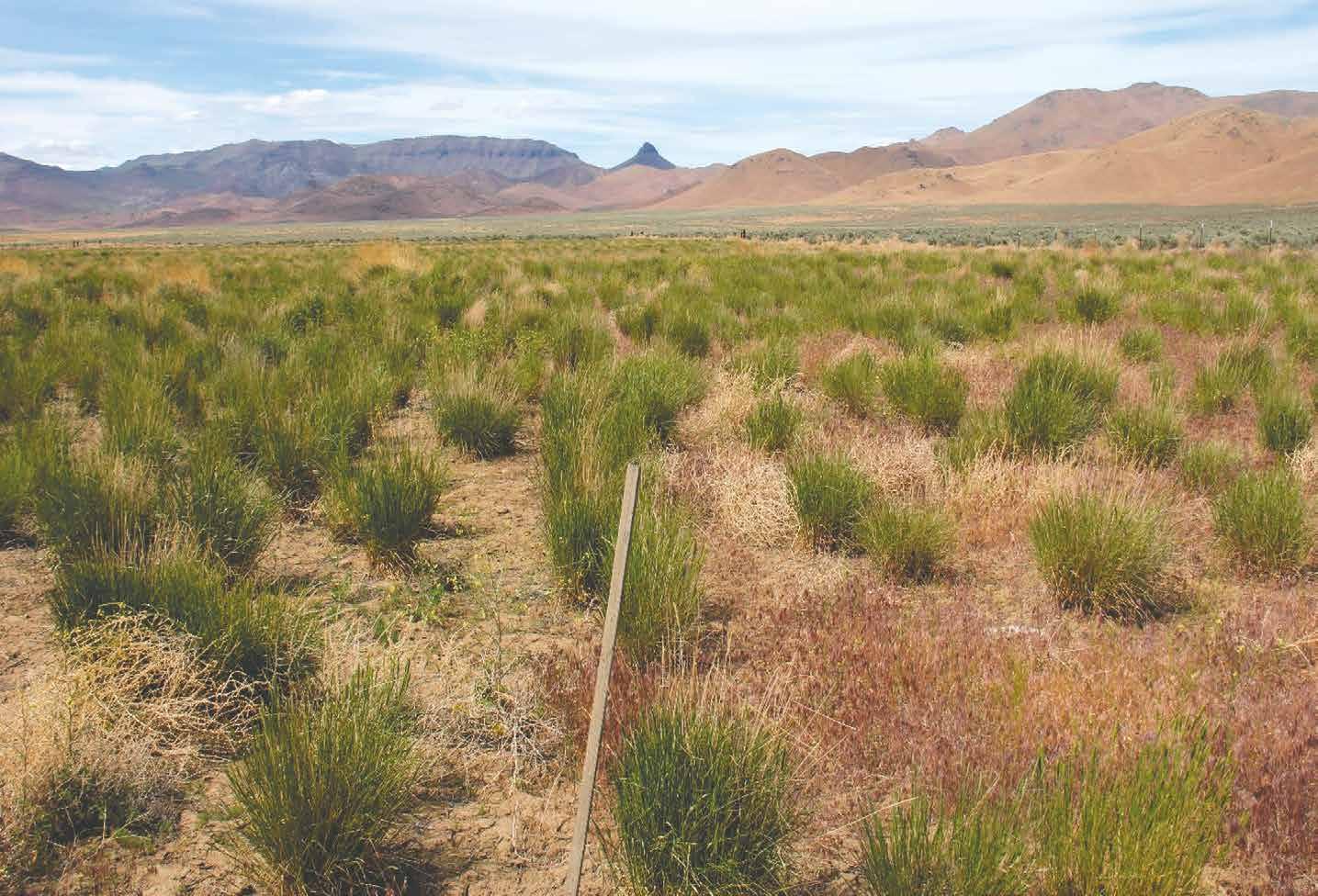 Figure 3 (above) Sulfometuron-methyl chlorosulfuron, Landmark, was very effective at controlling cheatgrass and broadleaf weeds resulting in an excellent seed bed preparation for seeding perennial grasses.
Figure 3 (above) Sulfometuron-methyl chlorosulfuron, Landmark, was very effective at controlling cheatgrass and broadleaf weeds resulting in an excellent seed bed preparation for seeding perennial grasses.
The Progressive Rancher www.progressiverancher.com 28 APRIL 2024
Figure 4 (below) A perennial grass community treated with indaziflam, Rejuvra, on the left compared to untreated on the right. The untreated habitat has been invaded by cheatgrass resulting in an increased chance, rate, spread and season of wildfire.
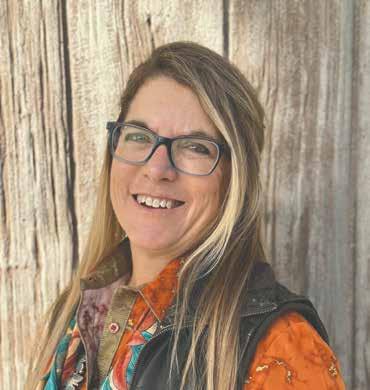
Corner of the Corral
Nevada Cattlewomen Plan Beef & Wine Pairing Workshops
Nevada Cattlewomen have been busy on several projects to promote the beef industry. One of those projects is our first Beef & Wine Pairing to be held in Minden, Nevada at the Park Home Ranch Venue, on June 2, 2024.
What is a Beef & Wine Pairing? The intent is for the attendee to learn about a few different cuts of meat, how to best prepare those cuts, do a taste test and sample the appropriate wine that pairs best with each cut. Park Ranch Meats will be present to answer questions and sell the same cuts of beef. Bottles of the sampled wines will also be for sale. A recipe card for each sampling will be given out with the beef cuts. The attendee will leave prepared to cook the meal that night.
Bringing producers and consumers together to enjoy the tasty benefits of beef in a fun and interactive workshop, beef and wine, what else do you need? The time of the event will be determined as we get closer to the date. Save the date and watch for flyers in the next issue, or you can email us at cwnv.inc@gmail.com for further information. We also plan to host pairings in Elko in the summer and Southern Nevada in the late fall or winter.
As I mentioned in my last article, I will share a monthly highlight on one of our members so you can get to know some of the hard-working crew behind the scenes of Nevada Cattlewomen. This month’s spotlight is on Lacey Tom, the Nevada Cattlewomen’s secretary.
Lacey Tom isn’t your average teacher. By day, she inspires young minds in a bustling high school agriculture classroom. But when the final bell rings, she trades textbooks for Wranglers, transforming into a small-scale cattle rancher alongside her husband and four young children on their small hobby farm in Moapa Valley.
Lacey is married to Lukas “Shorty” Tom and has four beautiful children: Rylan (14), Grayson (9), Aspyn (5) and Sutton (1 1/2).
This dual life isn’t a split personality; it’s a beautiful synergy.
By Keri Pommerening, NVCW President
Lacey infuses her classroom with the lessons learned on the ranch, teaching responsibility, resilience, and the profound connection between humans and the natural world. As the FFA Advisor for over 190 members, her students erupt in excitement when she shares stories of newborn calves or the intricate dance of nature that sustains their food.
Weekends and summers are a full immersion into farm life. Lacey tackles cattle management with expertise, her days filled with the rhythmic clanging of gates, the dusty joy of herding, and the quiet satisfaction of a job well done.
Lacey’s children are active in raising show cattle and rodeoing. Her children are active members of the Wrangler Junior Rodeo Association and the Moapa Valley High School Rodeo Club, which means Lacey and Shorty are always busy!
These hands-on experiences aren’t just about raising healthy animals; it also shapes her teaching philosophy. She believes in experiential learning, and the school farm becomes a living classroom for her students. Field trips to the school farm offer a firsthand look at agriculture, fostering a deeper understanding of where food comes from and the vital role farmers play in our society.
Lacey’s dedication extends beyond the classroom walls. She spearheads initiatives that connect local farms with urban dwellers seeking farm fresh food, ensuring families have access to fresh, locally-sourced food. Her passion inspires both her studens and the community. She leads workshops for aspiring young agriculturists while providing students college credits at the high school level, proving that agriculture is a field ripe with opportunity for anyone with grit and a love for the land.
Lacey is a testament to the power of a multifaceted life. She’s a teacher cultivating curiosity, a rancher who respects the land, and a role model who demonstrates that nurturing minds and herds can be equally rewarding pursuits.
Thank you, Lacey, for your commitment to Nevada Cattlewomen and to the beef industry!
If you are interested in joining the Nevada Cattlewomen, we’d love to have you help us inspire devotion and dedication in the beef industry. You can fill out a membership form online at https://tinyurl.com/NCMemberForm
Until next month, whether you are feeding cows, calving, or enjoying the sunshine, stay safe and warm.

Cattlewomen’s
The Progressive Rancher www.progressiverancher.com APRIL 2024 29
Lacey Tom and family
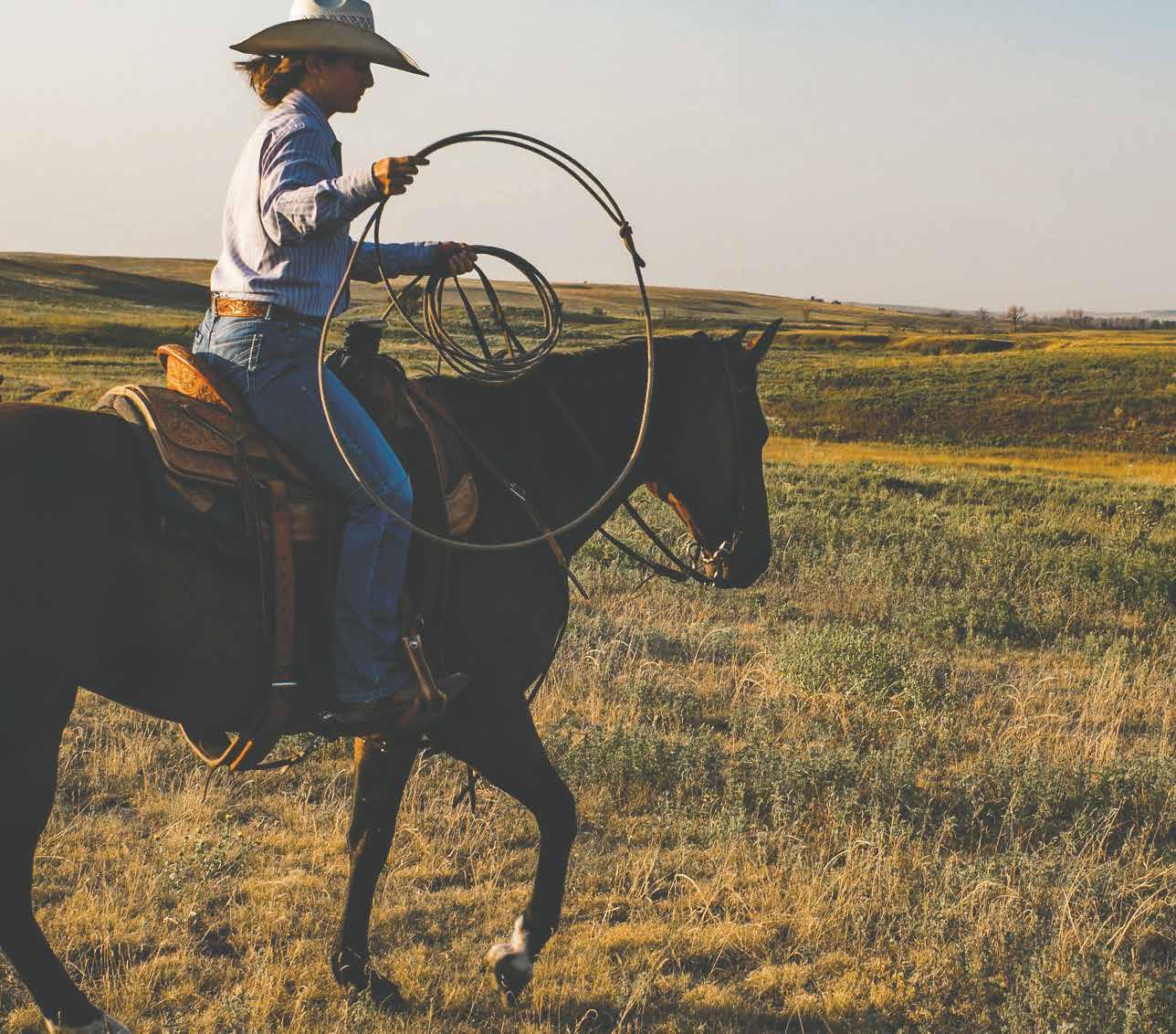



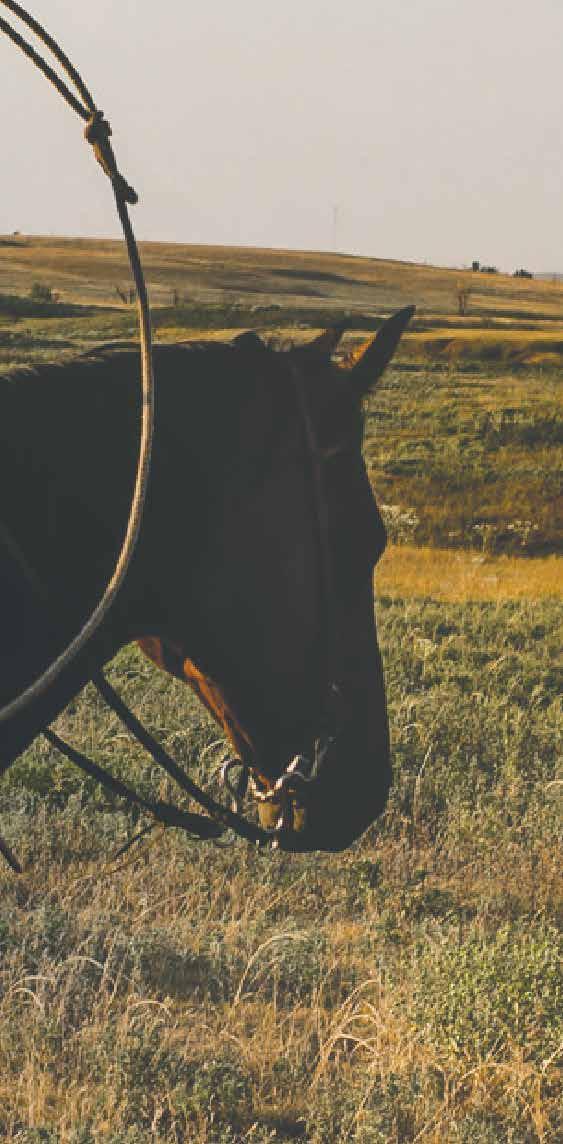






The change in agriculture today is just a glimpse of what lies ahead. It’s why, more than ever, we are committed to being the partner you can trust, who understands your needs and delivers value to help you achieve your goals.
Wherever agriculture goes, we’ll be there, alongside you, as you lead the way.
COMMITTED TO SERVING YOUR NEEDS. Visit agloan.com/growyourfuture A Part of the Farm Credit System. Equal Opportunity Lender. Your future grows here SCAN ME YOUR
HERE. The Progressive Rancher www.progressiverancher.com 30 APRIL 2024
FUTURE GROWS
By Emma Lande
www.unr.edu/nevada-today/news/2024/ sage-grouse-grazing-research?
A multi-agency study, spearheaded by researchers from the University of Nevada, Reno’s College of Agriculture, Biotechnology & Natural Resources and the U.S. Department of Agriculture, underscores the impacts of strategic cattle grazing, particularly on restoring the declining population of the greater sage-grouse bird, a keystone species in the Great Basin region.
Amidst ongoing decline, the U.S. Fish and Wildlife Service acted by listing the sage-grouse for protection under the Endangered Species Act in 2011. This move prompted the BLM to develop a federal conservation plan for the species in 2015. Simultaneously, the World Wildlife Fund classified the sage-grouse as “near-threatened” in 2014, signifying its concern about the species’ potential future extinction.
According to the study, the intensity and timing of grazing throughout the year has a significant impact on the availability of certain insects and plants that serve as vital food sources for the species, particularly during their reproductive phase. The insects (beetles, moths, ants, grasshoppers and butterflies) are a key source of food for the species’ hatchlings in their first three weeks of life, while the flowering plants, known as forbs, provide nutritional benefits, especially for nesting birds.
“While many studies have explored various methods to restore greater sagegrouse populations, including restricting petroleum drilling in their habitats, our research specifically focused on enhancing the food supply within mountain meadow systems, which are key habitat for wildlife,” said William Richardson, the study’s lead researcher and a postdoctoral scholar in the College’s Department of Agriculture, Veterinary & Rangeland Science. “Protecting these birds, however, requires a holistic approach that ultimately extends to fostering the growth of insects, which serve as crucial food sources, pollination agents and more.”
The sagebrush desert and shrubland are the predominant plant species in much of the Great Basin. However, a U.S. Geological Survey report indicates that nearly half of the region’s rangelands have been lost due to widespread habitat
Strategic grazing could boost conservation of ‘near-threatened’ sage-grouse
University of Nevada, Reno researchers link strategic grazing to increased food supply for the species
destruction, primarily from wildland fire. Native species such as the sage-grouse rely on this ecosystem for food and nesting and can survive nowhere else.
The study’s findings were first published in October 2021 in the Journal of Remote Sensing and later in December 2023 in the Journal of Environmental Management. The study, conducted between 2019 and 2021, assessed the impact of three grazing intensities on seven Great Basin meadows with varying vegetation cover in central Nevada. To monitor the proliferation of insects and plants on pastured meadows on a larger scale, the study employed the use of high-resolution digital cameras designed to capture time-lapse images of foliage over longer duration. They are commonly referred to as phenocams.
“Cameras allowed real-time observations and data collection simultaneously over the study’s two-year period,” Richardson said. “They typically track plant lifecycles with high accuracy and offer a more practical way to make longitudinal observations in ecological research.”
At the end of the observation period, data showed an increase in grazing during the spring and summer had a significant impact on the vegetation communities in the meadow systems, with higher grazing intensities affecting the length of the growing season. This timing coincided with the breeding season of sage-grouse, during which the nesting birds depend on the flowering plants for food.
“This is an important finding as it emphasizes the sage-grouse’s high sensitivity to disturbance, especially when they are hatching and caring for their young ones,” Richardson said.
The study also found that grazing intensity was not ultimately detrimental to insect abundance, and even permitted some insects to thrive. Specifically, beetles were found in higher numbers when grazing occurred in both wet and relatively drier seasons, while the moths and butterflies showed an increase in population during the wetter seasons.
“Our results show that strategic grazing has the potential to have a positive impact on the biodiversity of meadow habitat, which not only benefits other species, but
more so the sage-grouse, which is high up in the sagebrush food chain,” he said. Other members of the research team include Professor Tamzen K. Stringham and Associate Professor Andrew Nuss from the College’s Department of Agriculture, Veterinary & Rangeland Sciences, Postdoctoral Scholar Brian Morra from the College’s Department of Natural Resources & Environmental Science and Keirith A. Snyder from the U.S. Department of Agriculture’s Great Basin Rangeland Research Unit. Stringham, Nuss and Morra also conduct research as part of the College’s Experiment Station. The team received funding and technical support from the Nevada Department of Wildlife, the U.S. Geological Survey and the BLM.
With sagebrush ecosystems as their only home, environmental experts have long considered the well-being of sage-grouse as a barometer for the overall health of the sagebrush ecosystems. In fact, according to the U.S. Department of Agriculture’s Natural Resources Conservation Service, a healthy sage-grouse population, restored through the restoration of its habitat, also supports 350 other sagebrush-dependent species, such as elk, deer, mule, pygmy rabbit and pronghorn, and nearly 200 migratory and resident bird species. Any decline in the species’ population, therefore, acts as a natural alarm for an imbalanced sagebrush ecosystem. “The entire sage-grouse habitat is in the Western United States, and much of that land is publicly owned and managed by the federal government for purposes of conservation and development of natural resources, grazing and recreation,” said Brian Morra, a soil ecology postdoctoral scholar in the University’s Department of Natural Resources & Environmental Science, and a member of the research team. “Given this extensive federal involvement, research findings from publicly funded scientists, such as those presented in this study, play a crucial role in informing and supporting the habitat’s conservation policies.”
Despite numerous scientific appeals for the preservation of sagebrush-dependent species such as the sage-grouse and repeated warnings of their declining
population from conservationists, federal support that mainly focuses on sage-grouse populations rather than the ecosystem health at large is an inconsistency that Morra cites as potentially detrimental to the long-term health of sage-grouse and the sagebrush ecosystems.
“It’s disheartening to witness the challenges we face in achieving long-term sustainability for these ecosystems,” said Morra, whose research focuses on grazing management and soil health. “Regulatory support that considers ecosystem-level effects is crucial for advancing efforts towards preservation and ensuring a healthy future for generations to come.”
The bi-state sage-grouse, a variety of the greater sage-grouse that is exclusive to Nevada and California, has had its own share of conservation drama. It is undergoing its third assessment in a decade for potential protection under the Endangered Species Act. With a dwindling population of approximately 3,300 birds, only half of its count 150 years ago, the bi-state sage-grouse continues to confront the same challenges, notably pinyon-juniper encroachment and decreasing viable habitat.
“The plight of the bi-state sage-grouse demonstrates the urgent need for comprehensive conservation action for the species,” said Morra. “Scientific findings like this one must be amplified, and regulations need to be aligned with such findings to strike a balance between the needs of ecosystems and those of humans who use them.”
Funding for the project came from the BLM Carson City Nevada District; the BLM Nevada State Office; and the University of Nevada, Reno Great Basin Sagebrush Restoration Fund. Additional support was provided by the BLM through the Soil, Water and Riparian Monitoring and Research in Nevada, as well as the Nevada Forest and Rangeland Research Project: Desatoya Meadows sage-grouse habitat under the Great Basin Cooperative Ecosystem Studies Unit. The Nevada Department of Wildlife provided fencing installation for the study, and the U.S. Geological Survey helped in collecting sage-grouse data.
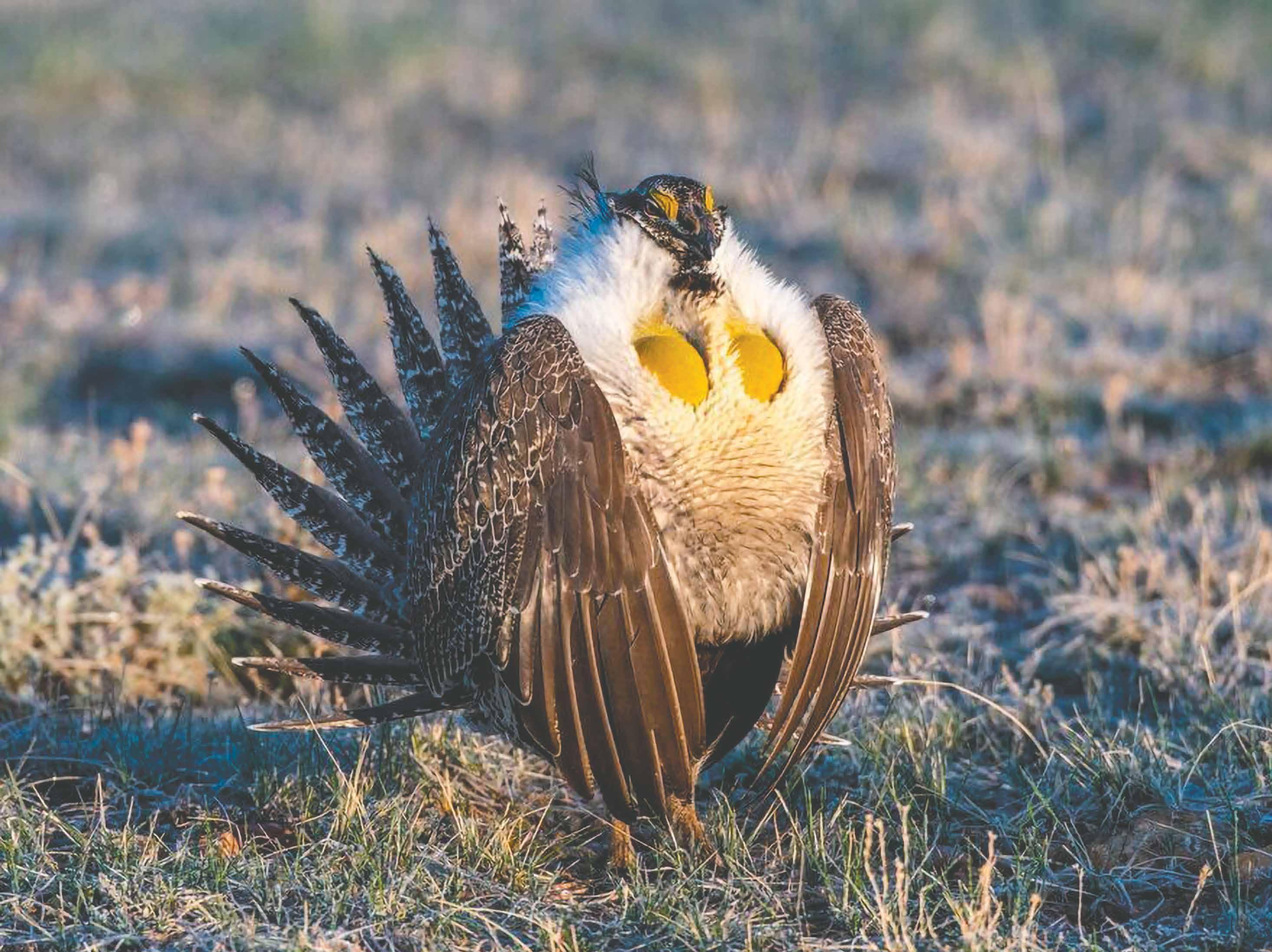
The Progressive Rancher www.progressiverancher.com APRIL 2024 31
Natural Resources Conservation Service
US. Department of Agriculture
Snowpack as a Percent of Median
February 29, 2024

March 4, 2024
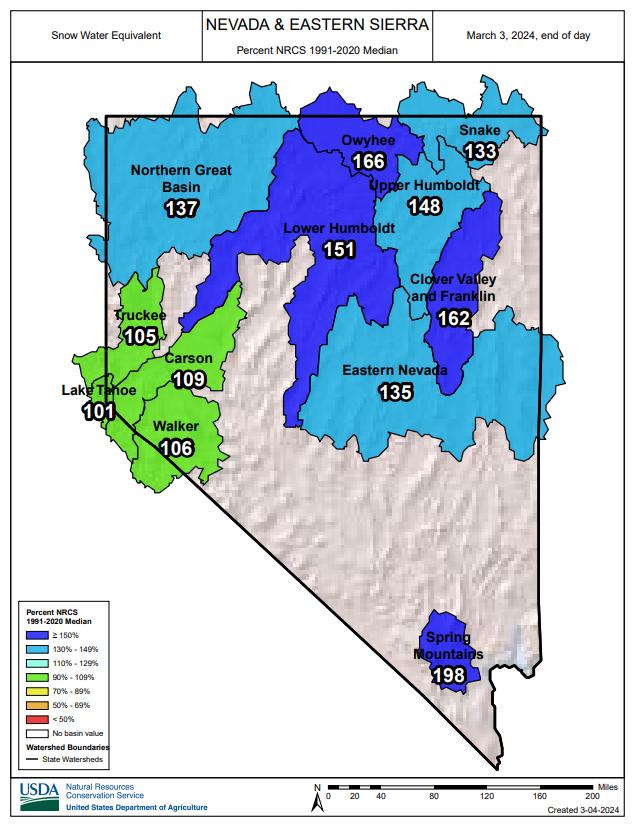
The Progressive Rancher www.progressiverancher.com 32 APRIL 2024
Leap Day Blizzard of 2024 Storm Summary
*Due to road and weather conditions on Mount Rose, we will not be doing a media day this month. We plan to hold the last one of the season in early April.
Contact: Jeff Anderson, jeff.anderson@usda.gov, 775-224-3484
The snowpack in the eastern Sierra is above normal for the first time this winter thanks to the blizzard that started on Leap Day! On January 1 the snowpack was 44% of median snow in the eastern Sierra, ranking 6th lowest for the date since 1981. As of March 4, snowpack percentages are 101% of median in the Lake Tahoe basin, 105% in the Truckee Basin, 106% in the Walker Basin and 109% in the Carson Basin based on data from multiple SNOTEL weather stations in each basin. Snowpack percentages compare the amount of water locked in this year’s snow to the 30-year period between 1991-2020.
Snowpack percentages in the eastern Sierra basins jumped 30% during the four-day long blizzard. Snow water content increased on average 6.9 inches across the 31 long-term SNOTEL sites in the eastern Sierra between February 29 and March 3. Based on historic SNOTEL data back to 1981, only three storms recorded a higher four-day gain than this year’s blizzard. Over the years there have certainly been longer duration events or back-to-back storms that caused far greater snow water increases, however the rate of increase over just four days would indicate the storm intensity for this blizzard was among the strongest on record.
Snow water amounts typically peak in late March or early April. As of March 4, the Carson and Walker basin’s snowpack have already reached their normal peak amounts. The Lake Tahoe and Truckee Basins are close but still need another storm or two to reach their normal peaks. Snow percentages across the rest of Nevada are currently 133-198% of median and all areas have already exceeded spring-time peak amounts.
The March 1, 2024, NRCS Water Supply Outlook Report will be published by the end of this week. This report includes streamflow forecasts for this spring’s runoff. To subscribe to the report and to track current snowpack conditions across the eastern Sierra and the state of Nevada visit: https://www.nrcs.usda.gov/nevada/snow-survey.
This month’s report and streamflow forecasts are available on the Nevada Snow Survey webpage: www.nrcs.usda.gov/nevada/snow-survey
NEW SUBSCRIBERS: Watch this overview video about how the Nevada NRCS snow program can serve you: youtu.be/gWm5TeASLY8
Read the background information on page two of the report and other help information located in the appendix which discusses how the NRCS measures the snowpack, how to interpret the streamflow forecast chart, and details about various streamflow adjustments.


The latest NRCS Nevada Water Supply Outlook Report is now available online
states/NV/wsor/NV-WSOR-2024-3.pdf
https://www.wcc.nrcs.usda.gov/ftpref/support/
The Progressive Rancher www.progressiverancher.com APRIL 2024 33
Biden’s First Public Land Oil and Gas Lease Sales Survive Suit
By Bobby Magill | https://news.bloomberglaw.com/environment-and-energy/bidens-first-public-land-oil-and-gas-lease-sales-survive-suit
The Biden administration’s first oil and gas lease sales on federal lands were upheld Friday by a federal judge who said he found no legal fault with the 2022 auctions.
Judge Cooper of the US District Court for the District of Columbia allowed the lease sales to stand, denying the groups’ motion for summary judgment and granting the Interior Department’s cross-motion for summary judgment in the agency’s favor.
The BLM in June 2022 auctioned 173 parcels for oil and gas drilling in seven states after a 2021 court order required the administration to lift its moratorium on leasing federal lands for oil and gas. President Biden in 2021 ordered a “pause” on leasing to allow the Interior Department to account for how oil and gas drilling contributes to climate change.
Environmental groups, including the Dakota Resource Council, the Center for Biological Diversity, the Sierra Club, and seven others, challenged the sales in US District Court for the District of Columbia, claiming they violated the National Environmental Policy Act for failing to fully account for the sales’ greenhouse gas emissions.
The sales were held for federal drilling rights in WY, Montana, North Dakota, Nevada, Colorado, New Mexico, and Oklahoma. The Biden administration has since held numerous oil and gas lease sales on federal lands nationwide.
“The Court appreciates the Conservation Groups’ concerns and the potentially existential threat that continued GHG emissions pose, yet it finds no legal error in the Bureau’s environmental analysis or its decision to approve the challenged lease sales,” Cooper wrote in his ruling.
He said BLM “reasonably” exhausted its tools to analyze the lease sales’ environmental consequences, including estimating greenhouse gas emissions and considering the social cost of carbon resulting from the sales. The bureau concluded the sales would result in no significant environmental impact.
“While many observers may find that result unsatisfying, it was all that was required to comply with NEPA in this ever-evolving scientific and regulatory landscape,” Cooper ruled.
In a separate case, Wilderness Society v. Haaland, Cooper agreed with the Wilderness Society and Friends of the Earth that the BLM made mistakes in assessing the impacts of the Wyoming sale’s impacts to groundwater and wildlife. Cooper ordered another round of briefings in the litigation before he rules on a remedy.
The Sierra Club has received funding from Bloomberg Philanthropies, the charitable organization founded by Michael Bloomberg. Bloomberg Law is operated by entities controlled by Michael Bloomberg.
The cases are Dakota Resource Council v. Interior, D.D.C., No. 1:22-cv-01853, 3/22/24 and Wilderness Society v. Haaland, D.D.C., No. 1:22-cv-01871, 3/22/24.
To contact the reporter on this story: Bobby Magill bmagill@bloombergindustry.com
Editors responsible for this story: Maya Earls mearls@bloomberglaw.com; JoVona Taylor jtaylor@bloombergindustry.com
Farm Credit Continued Support of Ag-Related Organizations in 2023
Seven associations contributed more than $900,000 to over 130 California nonprofits and other entities
In 2023, Farm Credit was again the largest provider of credit to U.S. agriculture from coast to coast, but its support for the farming and ranching community went much deeper than that. Because Farm Credit is also committed to the long-term viability of agriculture and rural communities, the farmer-owned cooperative is proud to support nonprofits working to preserve and protect California agriculture.
Last year, all seven Farm Credit associations operating in California – AgWest Farm Credit, American AgCredit, CoBank, Colusa-Glenn Farm Credit, Fresno Madera Farm Credit, Golden State Farm Credit and Yosemite Farm Credit – collaborated to contribute more than $900,000 to over 130 agricultural-oriented organizations around the state.
The funding supports farming and ranching in four main areas – raising awareness of agriculture, preservation of agriculture, education and research, and support for young, beginning and small farmers.
“Farm-related organizations such as the ones Farm Credit supports are doing a great job advocating for and supporting farmers and ranchers,” said Kevin Ralph,
California President for AgWest Farm Credit. “Investing in their work is helping the industry thrive today and will ensure it can continue providing food for the nation and the world in the years to come.”
Jacob DeBoer, Regional Marketing Manager with American AgCredit agreed. “Farm Credit is proud to support these organizations which, like Farm Credit itself, are working to ensure current and future producers are able to achieve their goals, protect their legacies and grow the industry’s next generation,” DeBoer said.
The bulk of the contributions – nearly $500,000 – was directed to organizations that raise awareness through a variety of methods. Two nonprofits were Western United Dairies and the Almond Alliance.
Western United Dairies is the trade organization representing more than 75% of the milk produced in California. Farm Credit supports the group’s Dairy Leaders Program, which selects dairy professionals to participate in a months-long program to learn about the state and federal legislative and regulatory processes, how milk products are marketed, and ways they can communicate effective messages about the industry. The Almond Alliance, meanwhile, is the advocacy voice for the
$5.62 billion almond industry, which in 2023 focused on issues vitally important to almond growers, including supply chain breakdowns that limited exports to Asia and efforts to upgrade the state’s aging water infrastructure and how it is managed.
Farm Credit is also a strong supporter of groups seeking to preserve agriculture in the Golden State, donating over $150,000 to organizations involved in that cause. Two organizations that benefitted were the Farmland Trust and the Rangeland Trust, which both purchase conservation easements to allow farms and ranches to continue in operation without fear of future development. Farm Credit sponsors major fundraising efforts for each organization, which helps them stem the loss of an average of 50,000 acres of ag land every year in the state.
Education and research is a third Farm Credit priority, receiving over $150,000 in 2023. Organizations receiving support included the Small Farm Conference, organized by the Community Alliance with Family Farmers, and the Latino Farmer Conference, sponsored by the National Center for Appropriate Technology and the USDA’s Natural Resources Conservation Service
The Small Farm Conference provides an invaluable opportunity for smaller operators to network and receive advice and formal training in issues specifically affecting them, while the Latino Farmer Conference, conducted entirely in Spanish, provides a wide range of information for beginning and seasoned small farmers. Finally, Farm Credit continues to strongly support programs to nurture the next generation of farmers and ranchers to ensure the future of agriculture in California, donating over $125,000 to organizations such as the Center for LandBased Learning and the California Farm Bureau’s Young Farmers and Ranchers program, designed to identify, grow and develop young Farm Bureau members and provide them with opportunities and experiences to help them become effective leaders in the agriculture community.
The Center for Land-Based Learning’s FARMS Leadership program is designed to introduce, train and recruit about 200 high school students from major farming regions for college and career opportunities in agriculture and environmental science.
Contact: Linda Sadler
Farm Credit Alliance (775) 677-7876
sadlerassociates@sbcglobal.net
The Progressive Rancher www.progressiverancher.com 34 APRIL 2024
GREENWAY’S GRAZING CORN
Graze Yearlings1500 on a 130 Acre Pivot for 30 Days
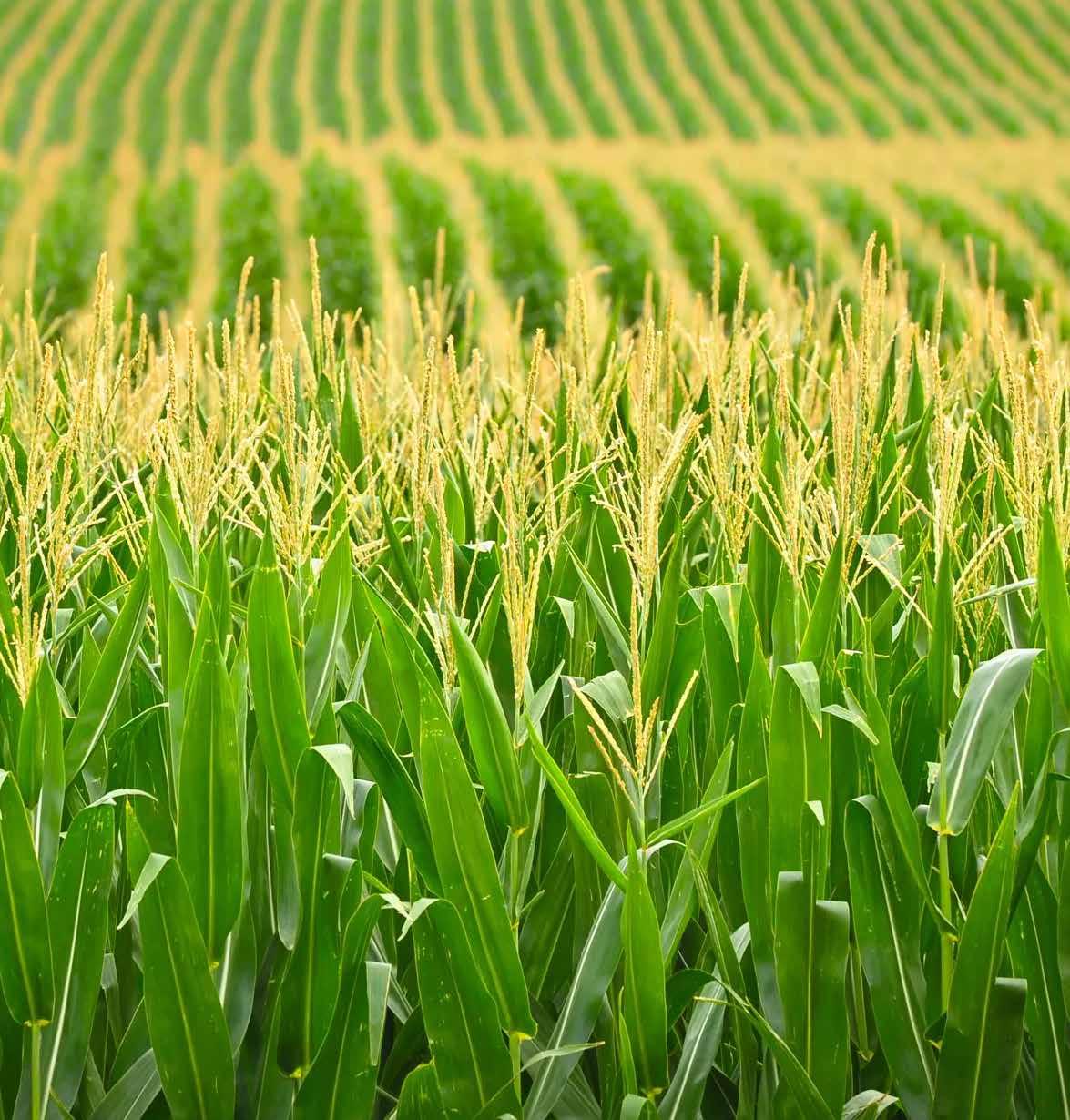
3.5 lbs. of Gain Per Day (69% TDN) 5-7 wt. Cattle*
Greenway Seeds Grazing Corn (GX80) is the No. 1 grazing corn in the nation because it is 5-6 days earlier than the competition. This allows the rancher to plant 5-6 days later and still reach peak sugar content (pre tassel) before the frost shuts you down!
OVERSEED ALFALFA with Grazing Corn
Plant with a grain drill following second cutting on an older field alfalfa. Ready to graze in early September.
“We planted GX80 following second cut alfalfa. If we had to do that over we would follow third cut. We grazed 400 head for two weeks on 20 acres” Cory Veterre - Greenriver, Utah
HERE’S WHAT RANCHERS ARE SAYING
Casey Calvin - Monte Vista, CO
We grazed lambs on GX80. They ate it all the way to the ground. Unbelievable! (See website for photos)
Crawford Cattle - Winnemucca, NV
Planted mid July, it was way over our heads. We were surprised as to how long we were able to graze. We also baled some of it. We’re buying again.
Cory Miller - Grass Valley Farm, Missoula, MT
We planted our GX80 under wheel lines and watered heavily before layby. This was key as the corn grew 7ft tall!
Tom Kerns for Mike Becker Ranch - Baker, OR
We were able to carry 14 A.U.M.’s per acre with our late season grazing of GX80.
Jesse Norcutt - Currant, NV
We cut and baled the GX80 at pre-tussel. It was fed to 5-7 wt. cattle, and they gained 31/2 lbs/day

Alan Greenway
Seedsman
Over 50 Years Experience
Greenway Seeds
Caldwell, ID
Alan Greenway
208-250-0159 (cell)
“Modern Forages Sold Nationwide And Canada”
208-454-8342 (message) GREENWAY
www.greenwayseed.com
Warehouses in Caldwell, ID and Deerfield, WI FREE
* Jesse Norcutt, Currant, NV
28 Ton Silage Pasco, WA
SEEDS
WITH
The Progressive Rancher www.progressiverancher.com APRIL 2024 35
SWEET CORN SEED
ORDERS!


Presort Standard U.S. Postage PAID Tooele , UT Permit # 40

















 Dan Kniffen
Dan Kniffen



















































 Figure 3 (above) Sulfometuron-methyl chlorosulfuron, Landmark, was very effective at controlling cheatgrass and broadleaf weeds resulting in an excellent seed bed preparation for seeding perennial grasses.
Figure 3 (above) Sulfometuron-methyl chlorosulfuron, Landmark, was very effective at controlling cheatgrass and broadleaf weeds resulting in an excellent seed bed preparation for seeding perennial grasses.

















